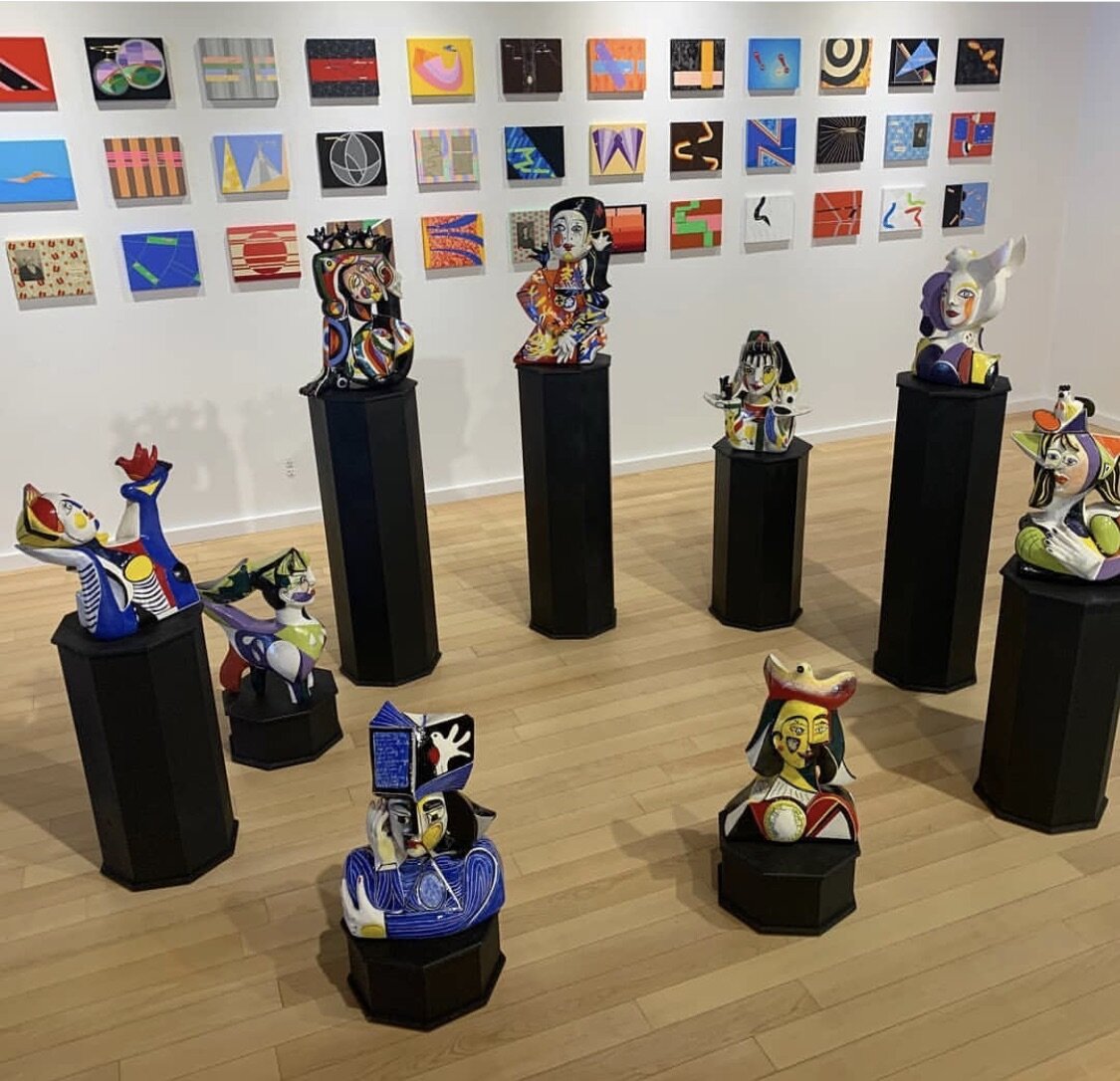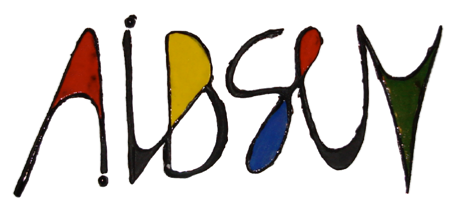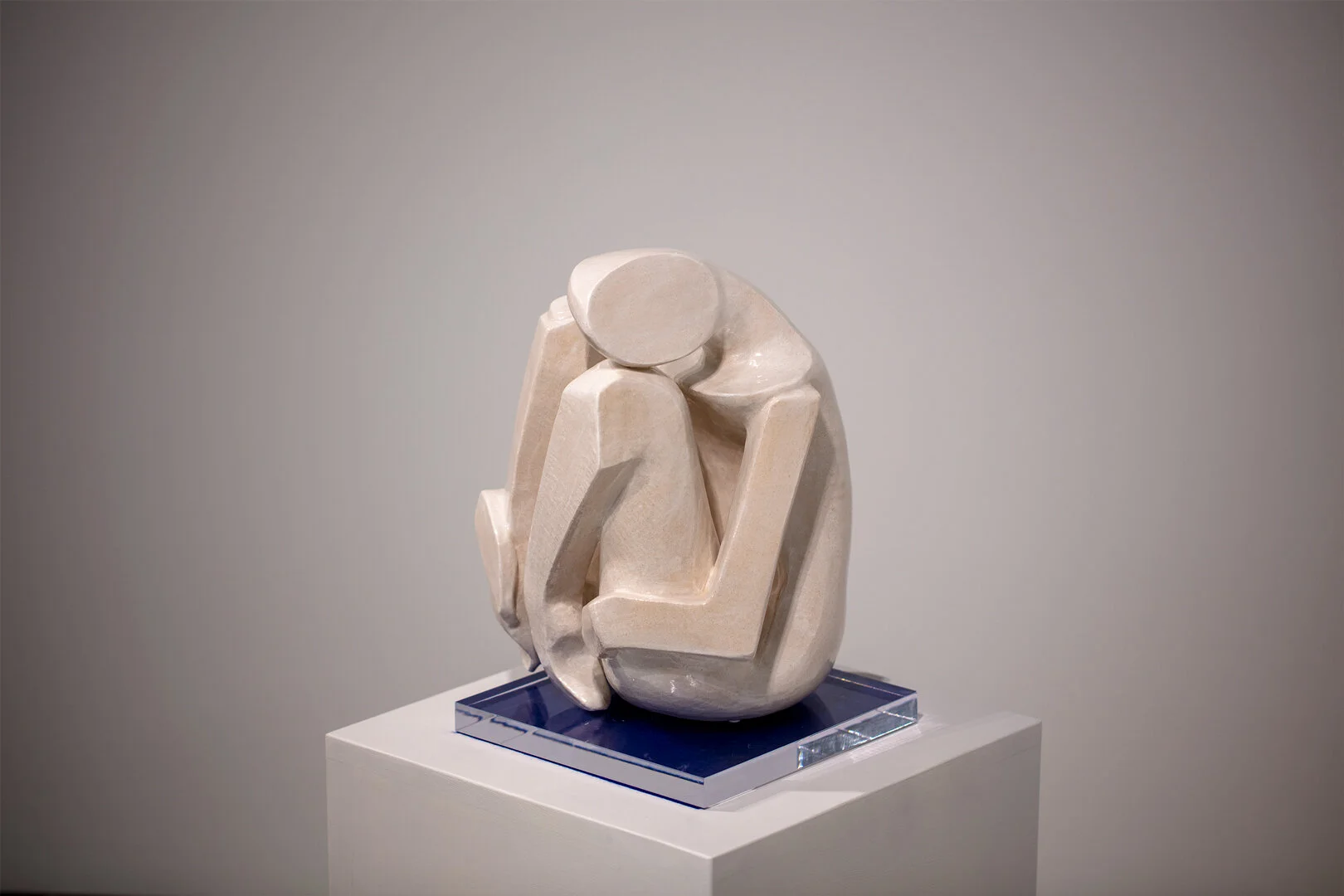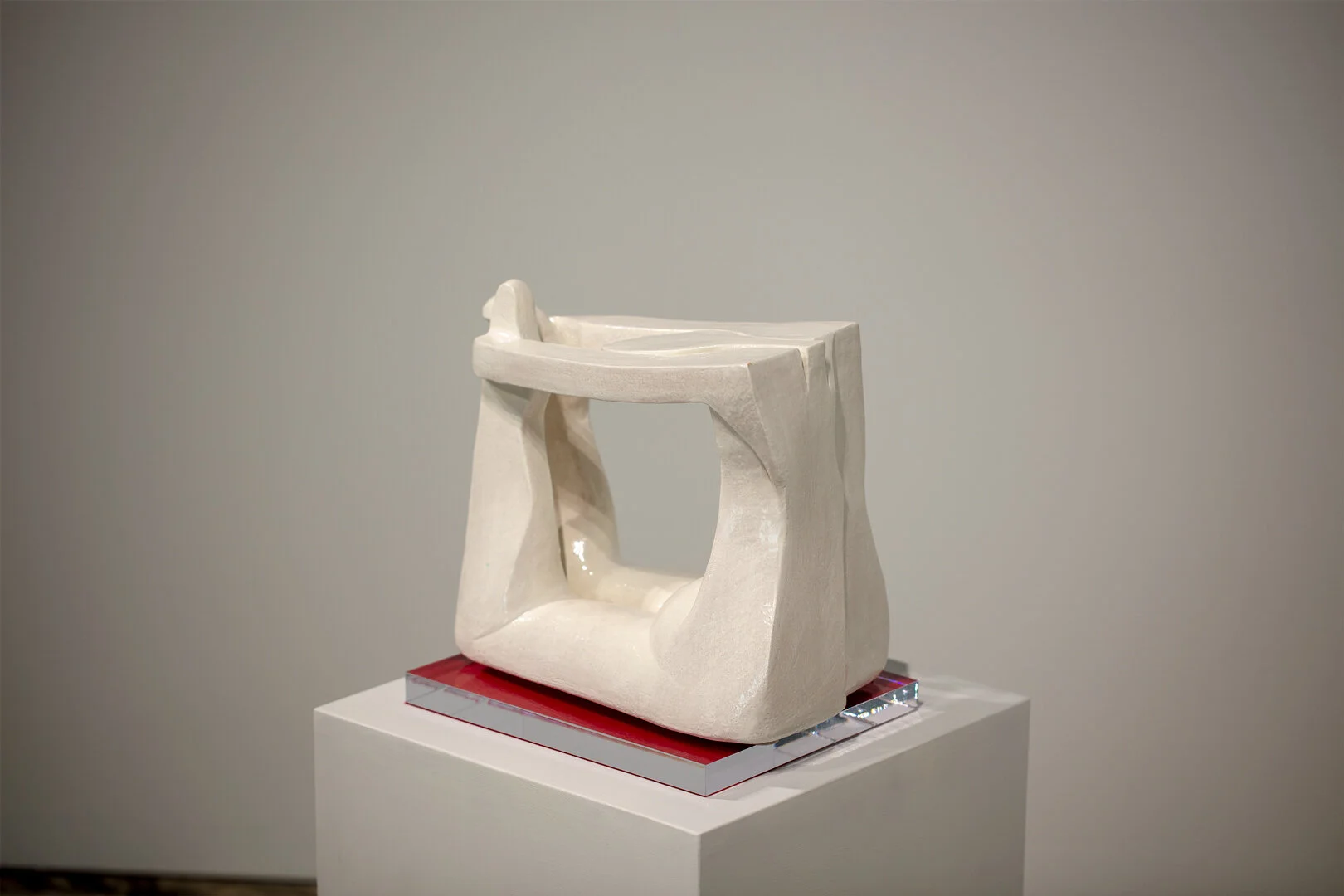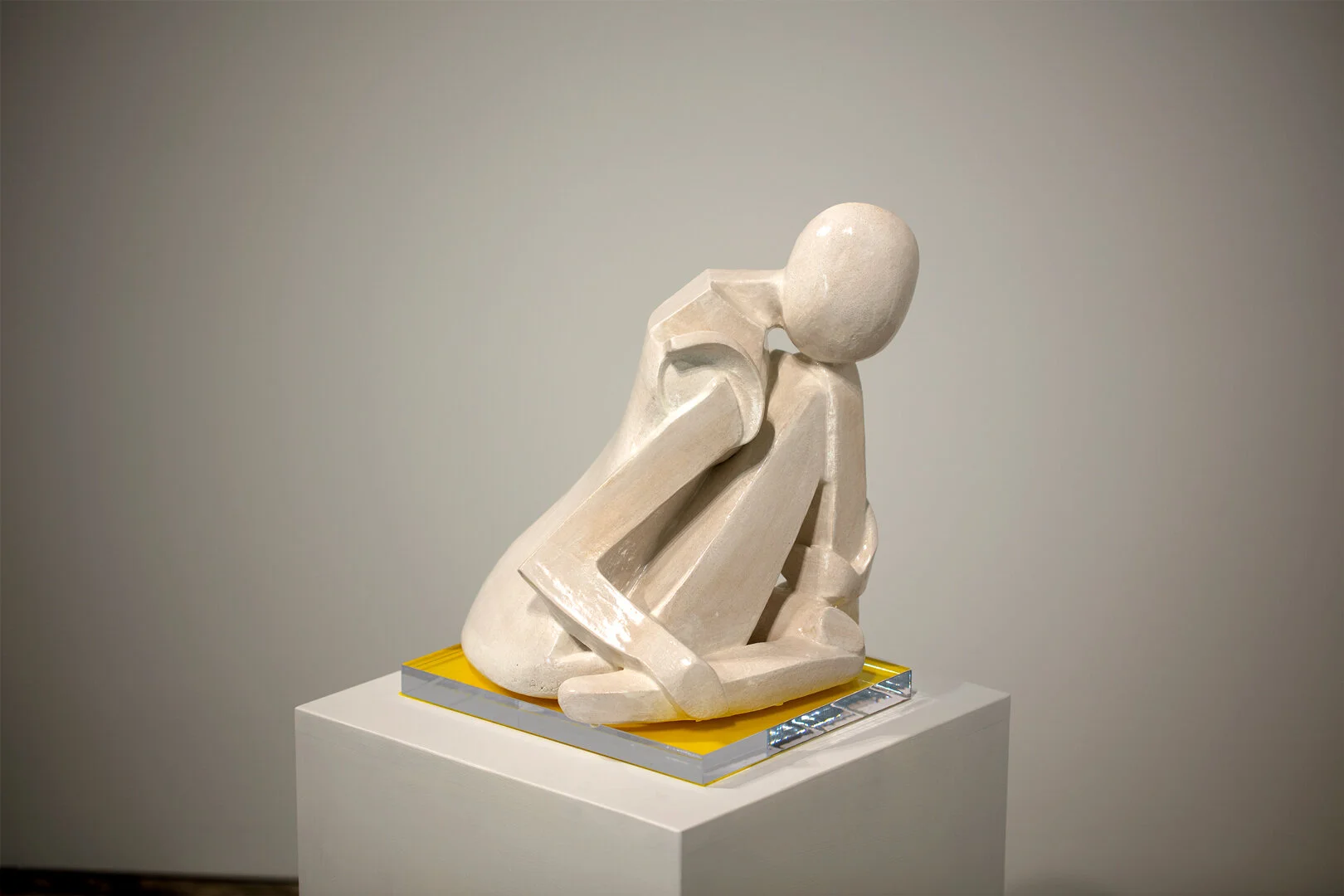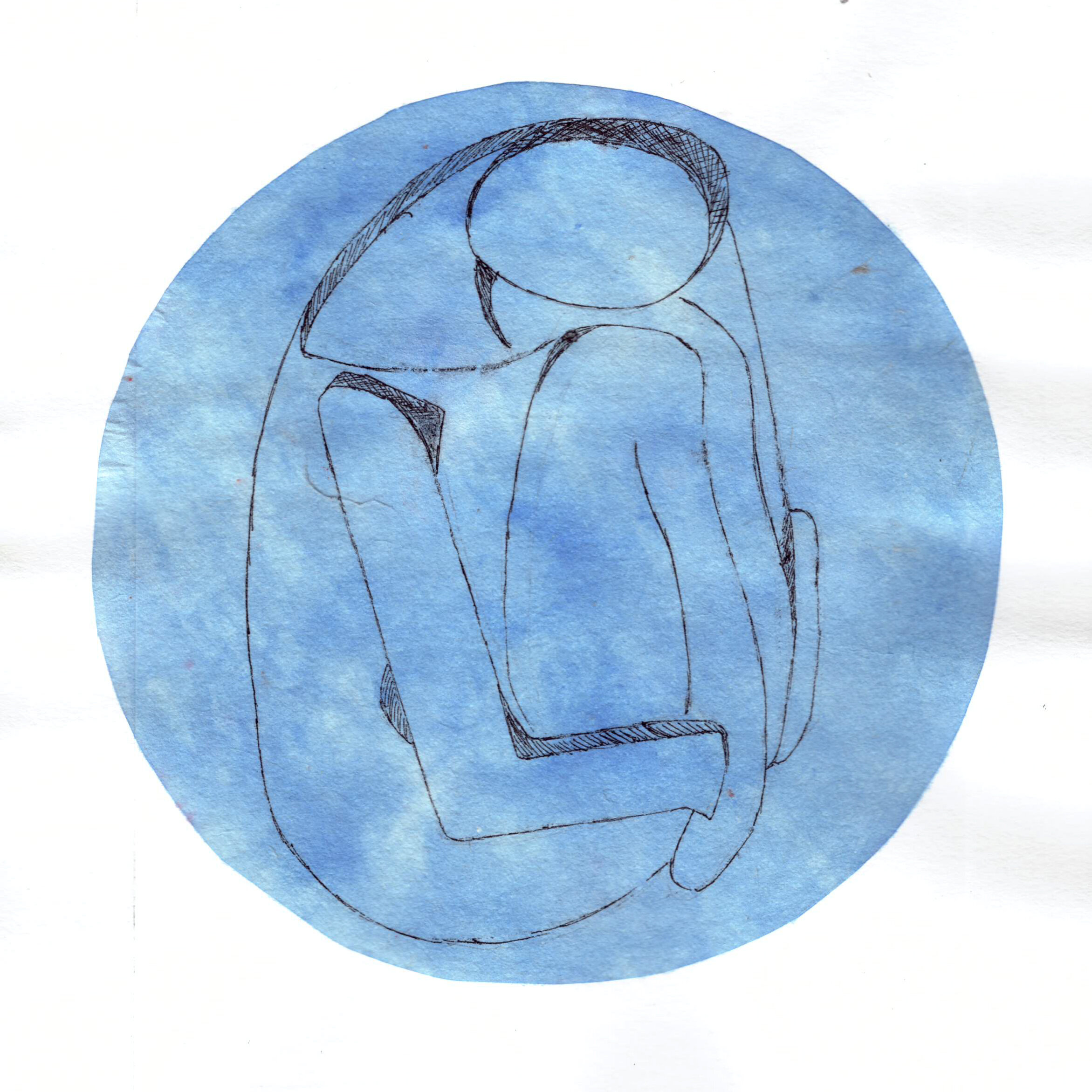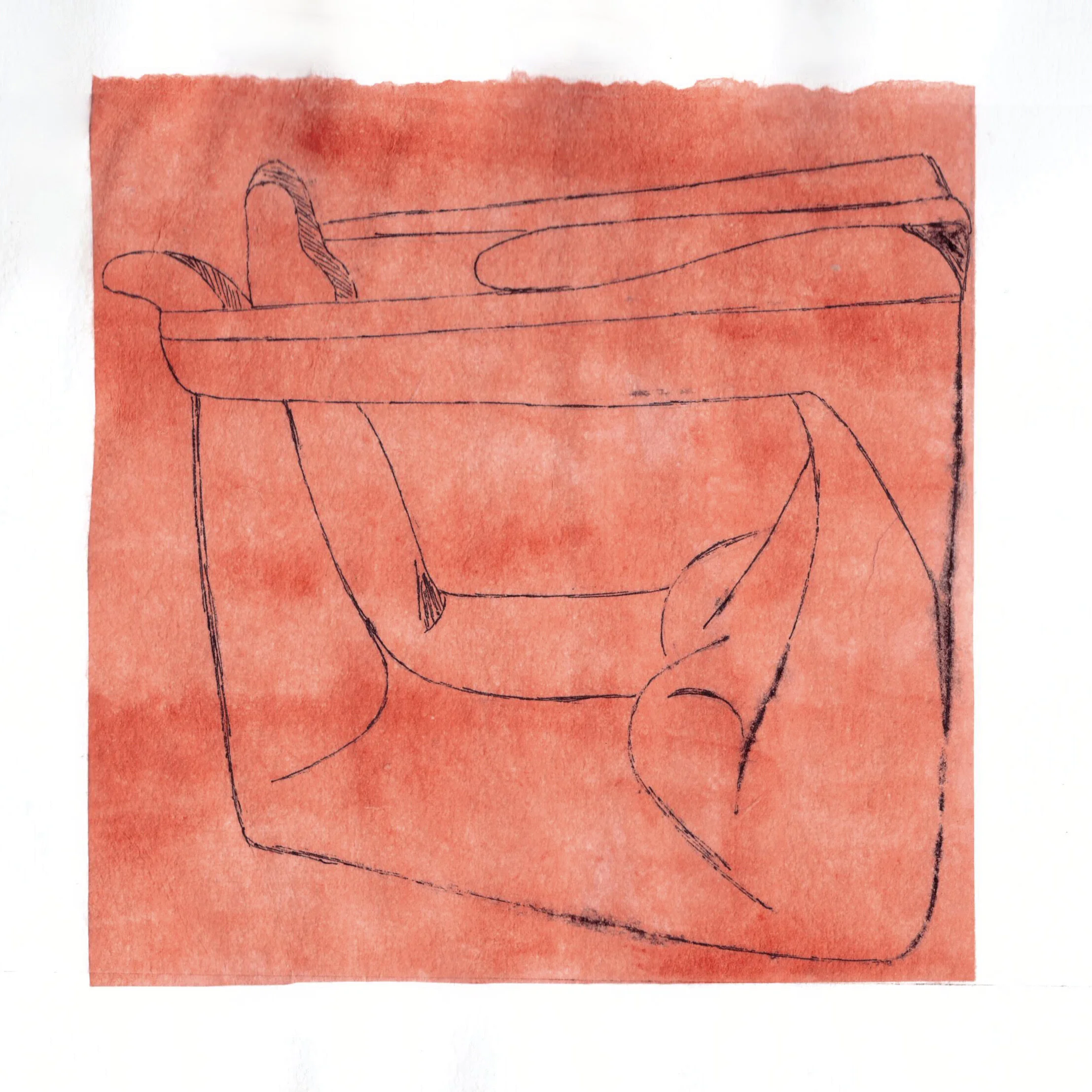Clay Sculptures:
The flexibility of clay with cubism, slip casting and everything else in between.
Cubism, jazz, life!

L'Heure Bleue 24"Hx16"x15"D SOLD
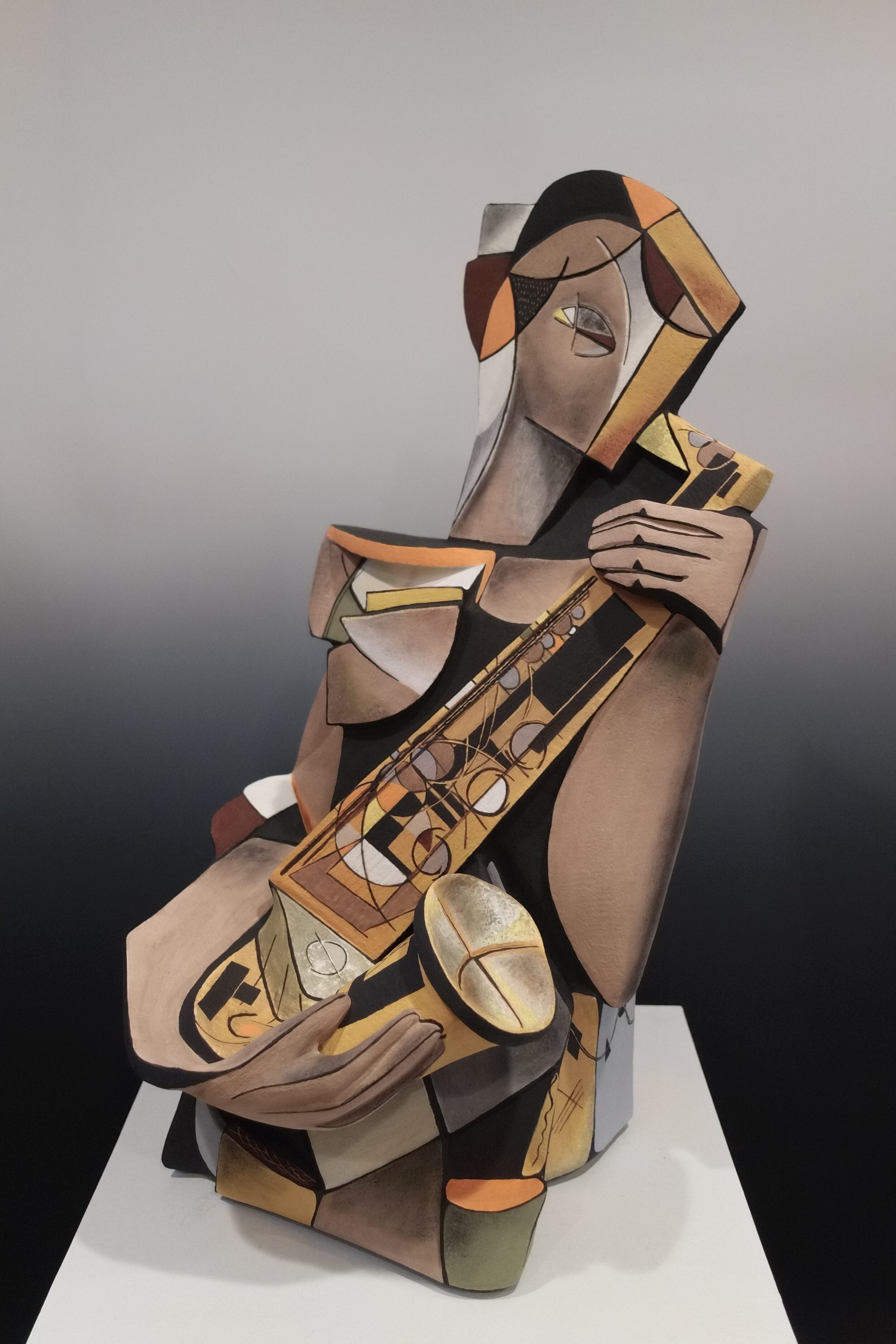
The Saxophone Player 24"Hx13"Wx14"D SOLD

The Hug 13"Hx12"Wx19"D

Woman Playing a String Instrument 22"Hx14"Wx9"D SOLD
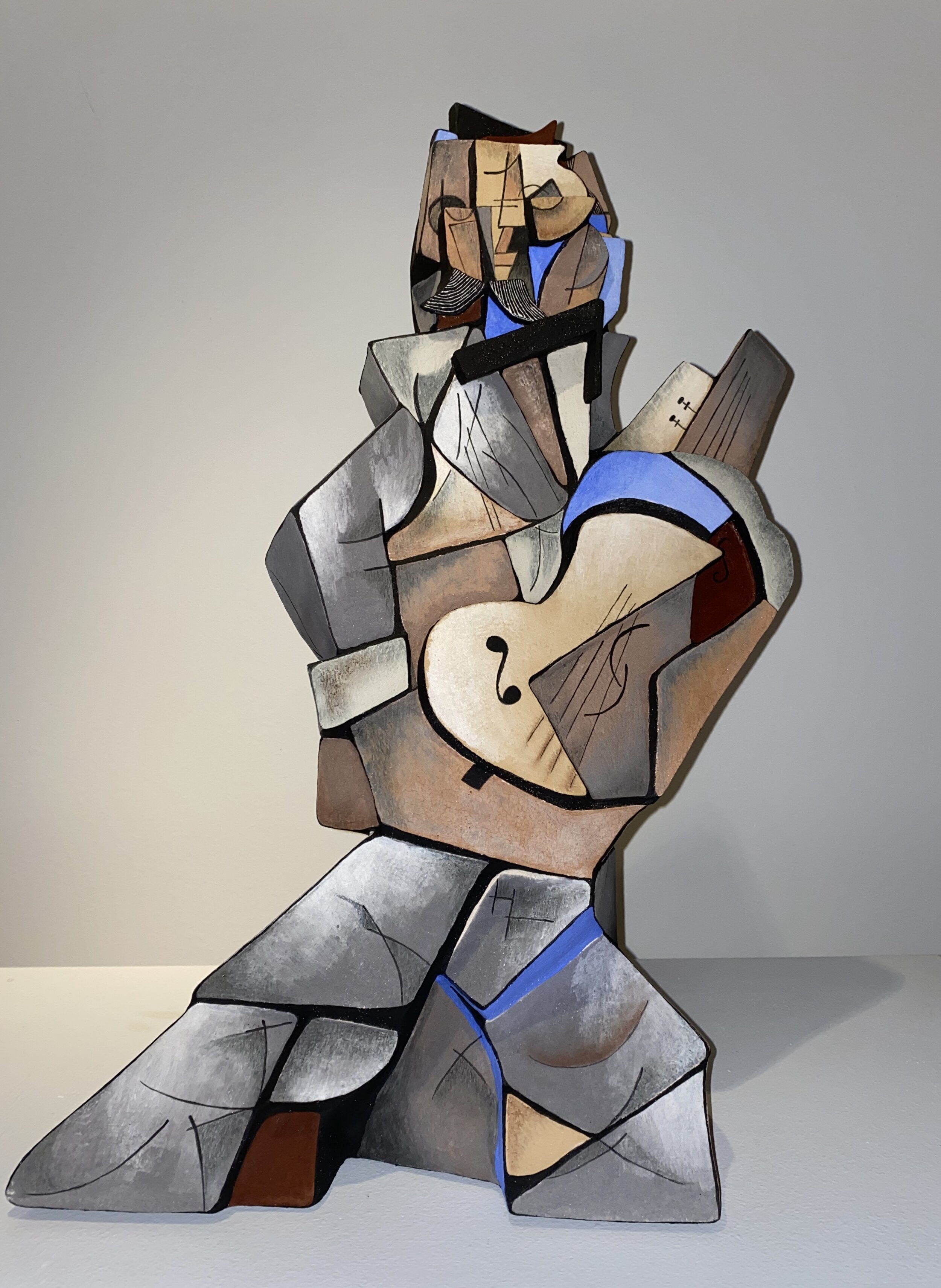
The Musician 21"Hx14"Wx9"D SOLD

The Clarinet Player 20"Hx14"Wx14"D SOLD
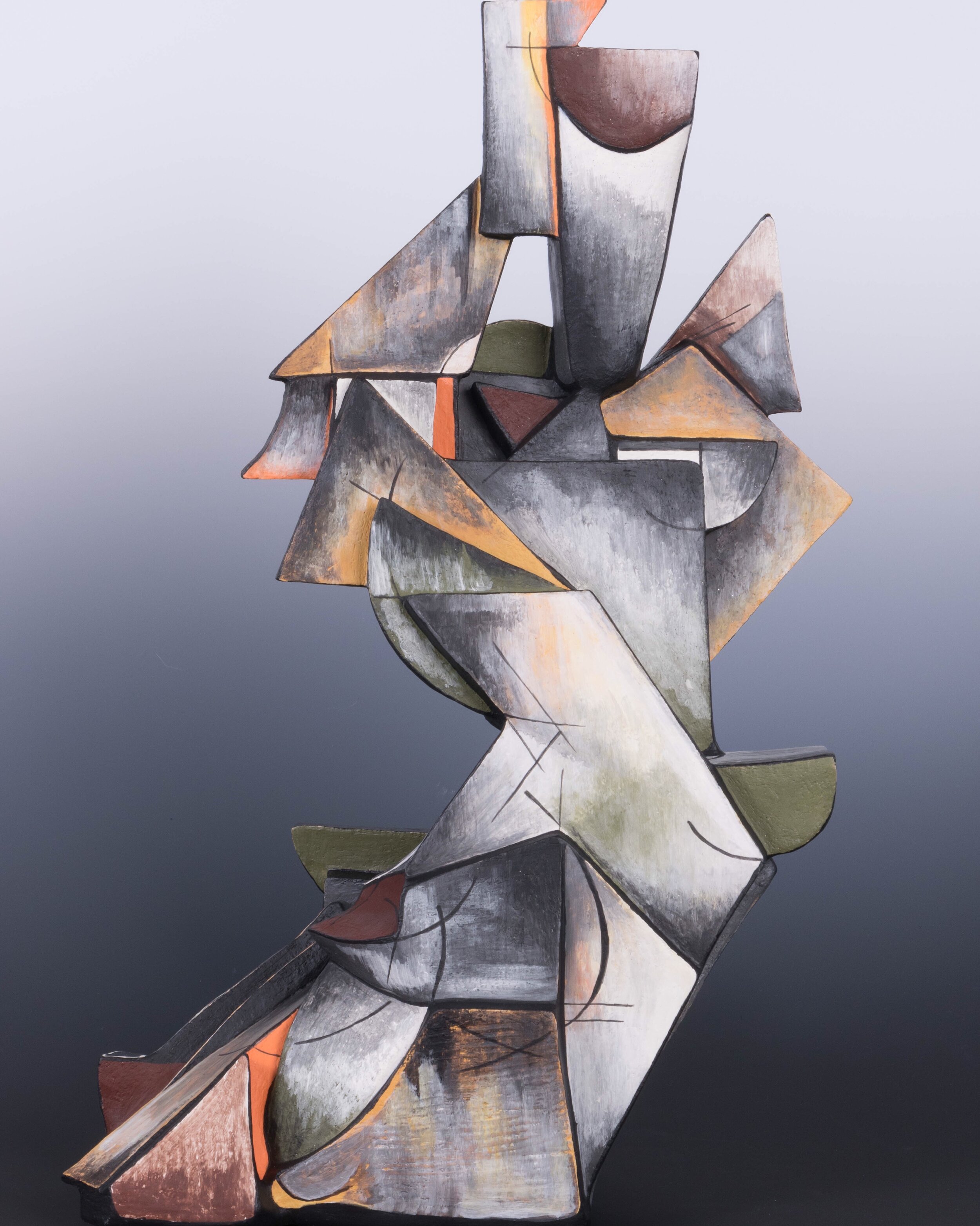
Nude 21'Hx13"Wx9"D
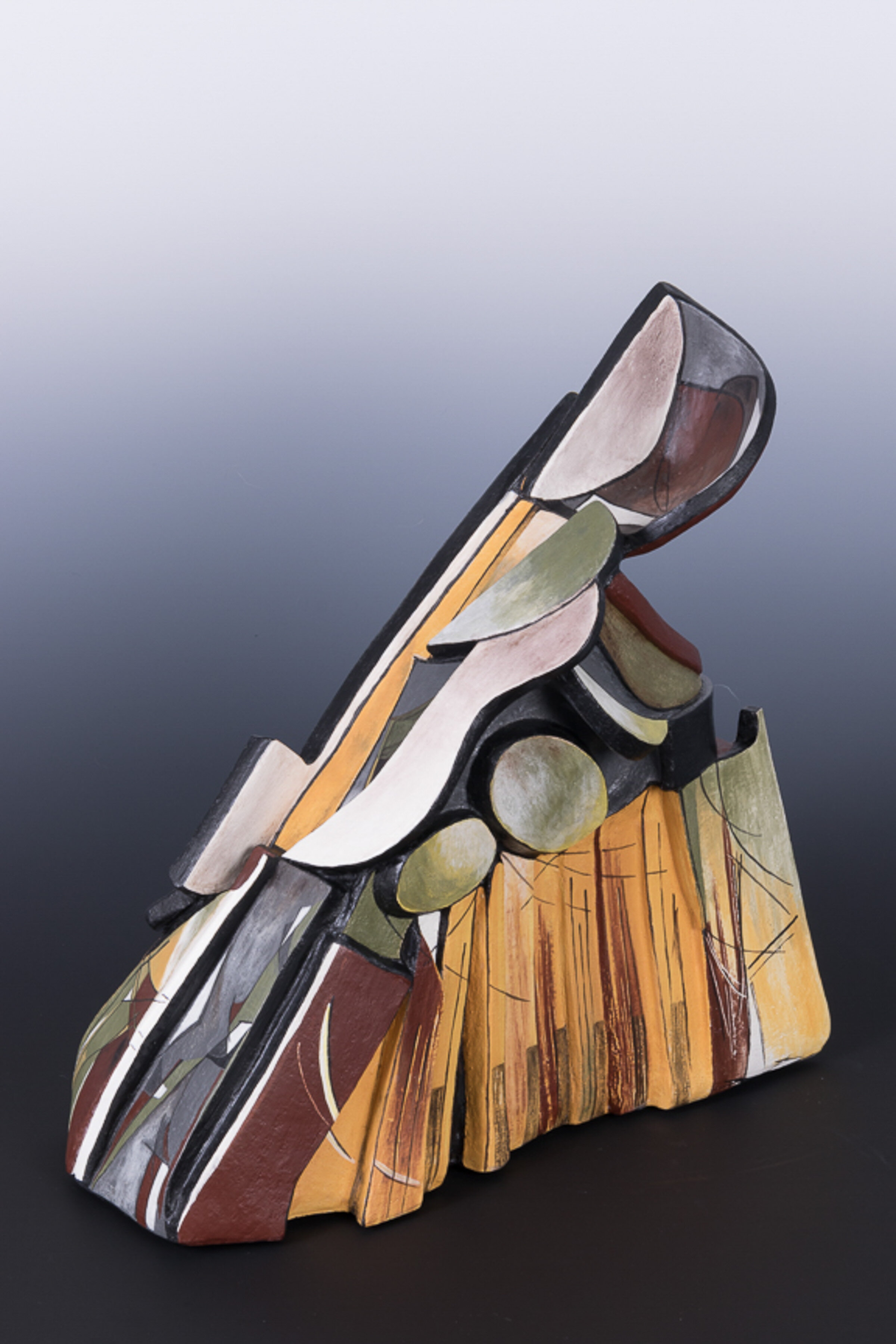
All That Jazz 16"Hx15"Wx8"D SOLD

Woman Playing the Bass 20"Hx15"Wx16"D SOLD
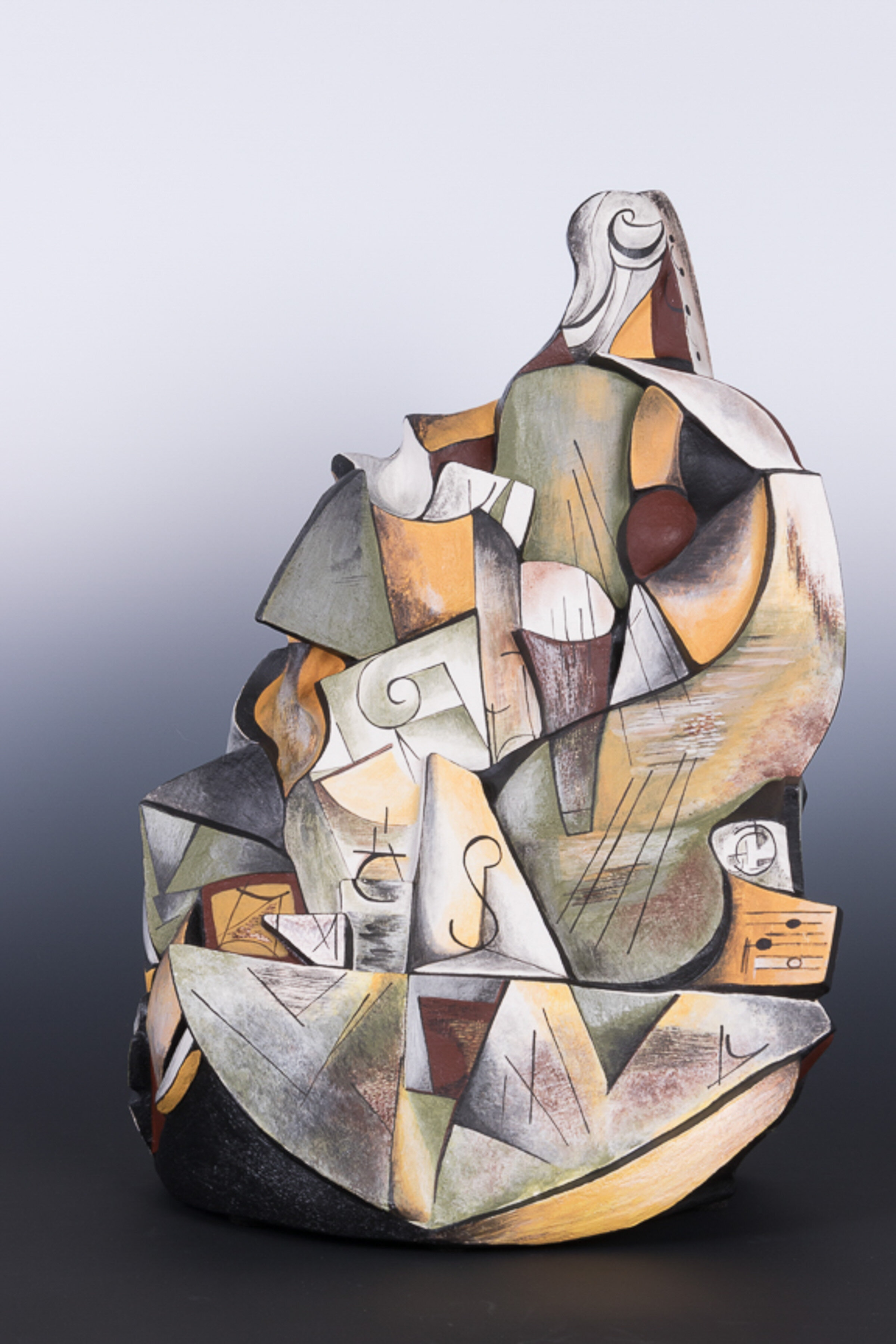
Bass 20"Hx15"Wx12"D SOLD
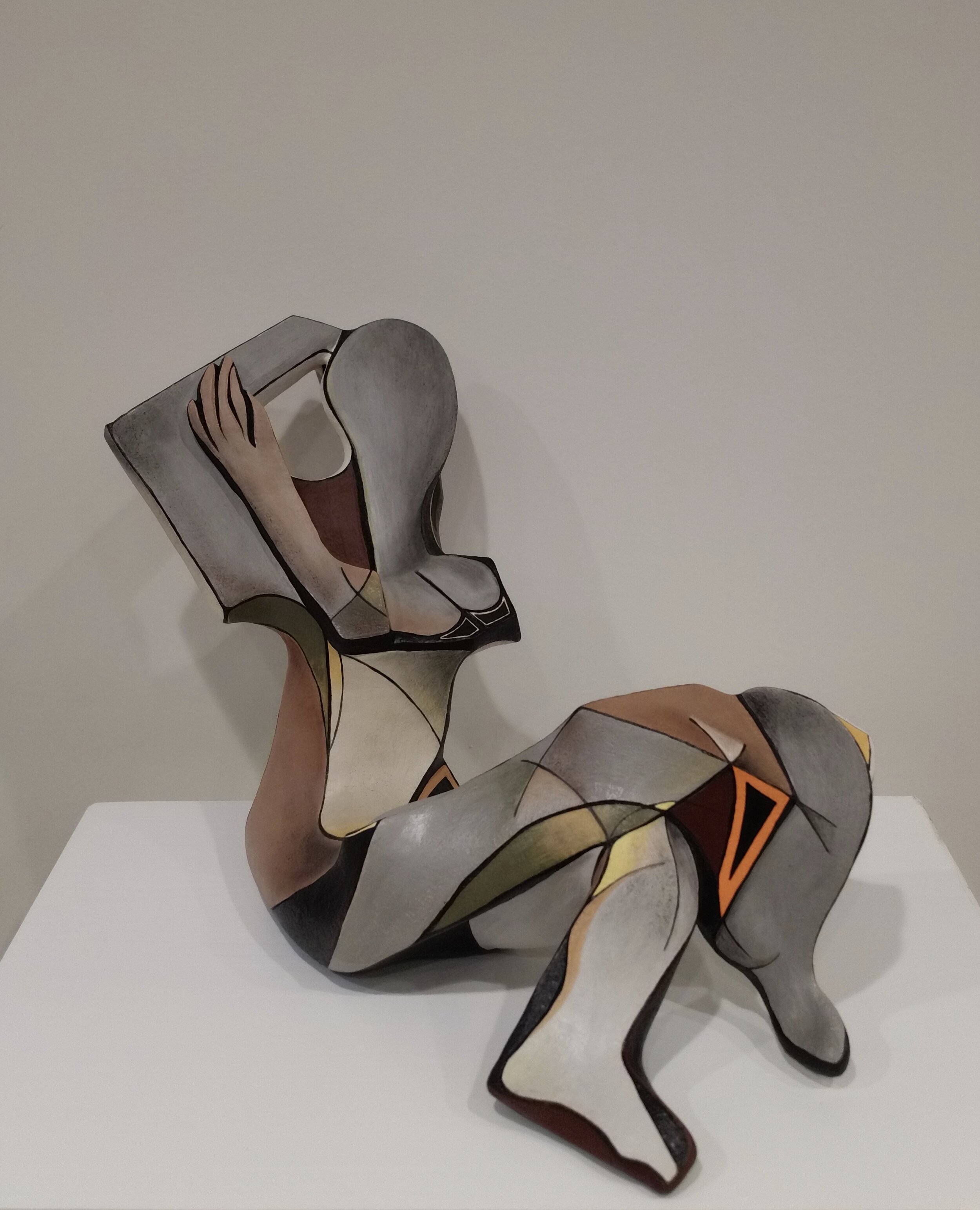
Reclining Nude 14"Hx18"Wx19"D

The Lovers 26"Hx11"Wx11"D

The Other Lover 32"Hx16"Wx16"D
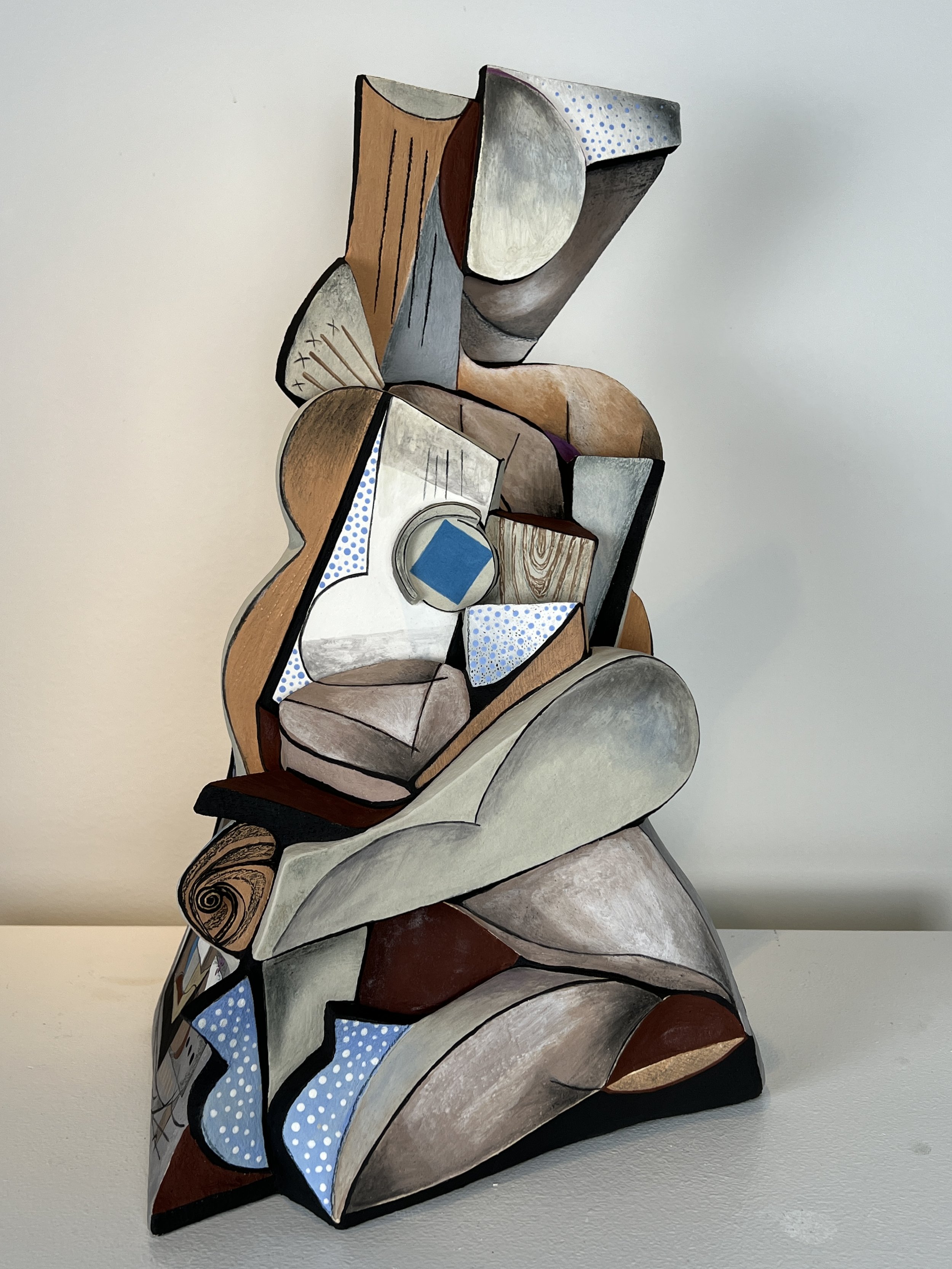
Guitar Player 20"Hx12"Wx10"D SOLD
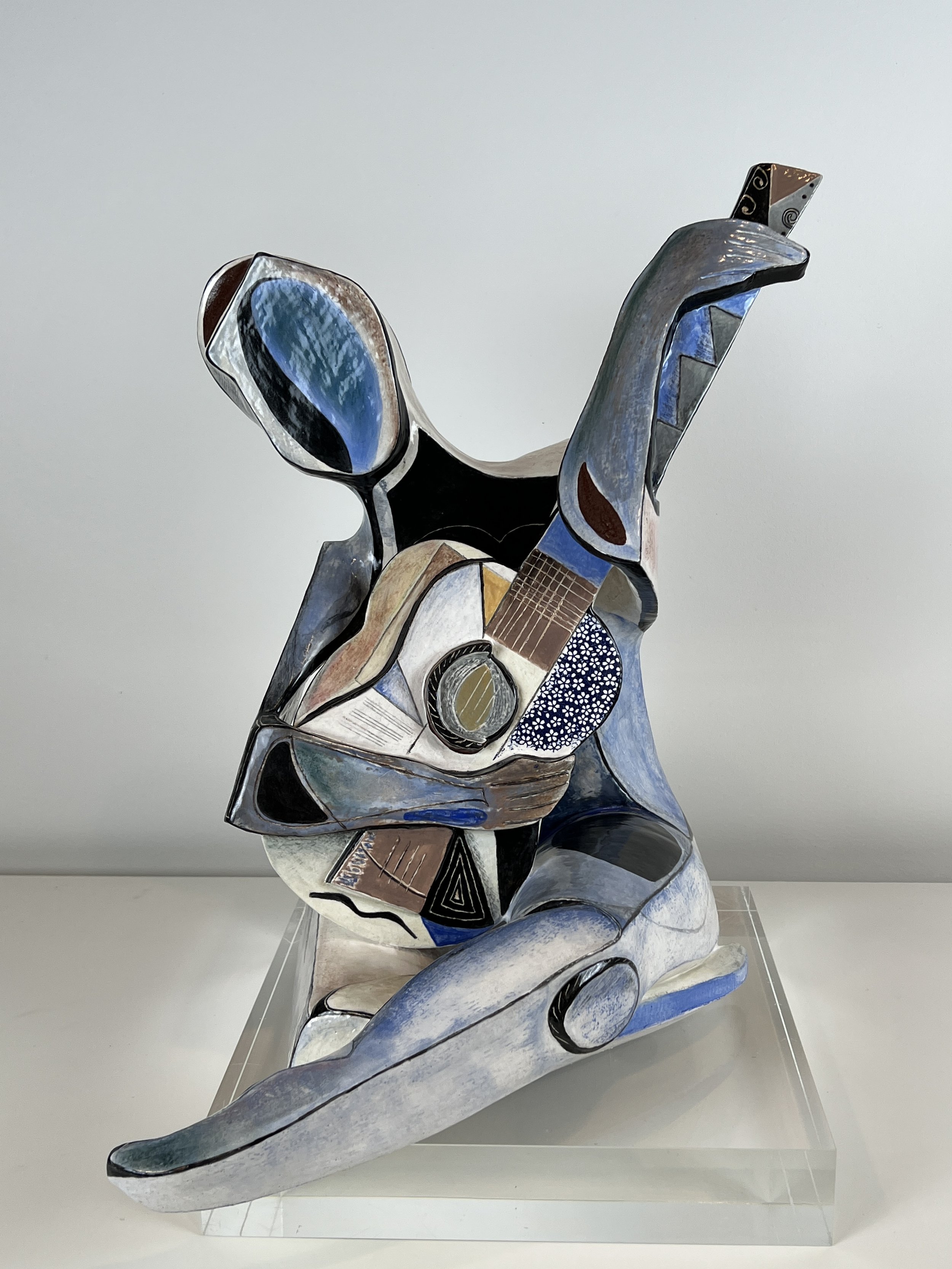
Blue Guitar Player 20"Hx12"Wx16"D SOLD
Video feature
The Guitar Player
The theme of music is a favorite one throughout the history of the arts. Cubism gave string instruments a particularly prominent place with many guitars and violins abstracted into paintings and sculpture. The influence of Picasso, Juan Gris, Braque, Lipschitz and Henri Laurens conflate here in The Guitar Player created in 2022. This composition features a woman whose body has fused with the guitar, to project the moment where instrument and player become one. The neck of the guitar shades into grey, maybe to become the neck of the woman, another blurred line again between the object and the subject. A small hand appears on the left, the other one has disappeared underneath the guitar. The woman sits on a stool, ornate with a couple of cubist cameos that display what would have been on a table nearby, a “gueridon” of sorts, adorned with grapes, a bottle and may be another smaller string instrument. Here and there faux wood makes an appearance as a wink to the use of faux wood wallpaper used by the cubists. Trompe l’oeil and humor abound all around the piece, drawing the eye to the dotted blue heeled shoes in the lower left corner of the sculpture, harkening to Impressionists’ pointillism. On the backside more guitar silhouettes complete a musical still life.
The Guitar Player
Nudes and Self-love

Love Tattoos 17"Hx26"Wx8"D
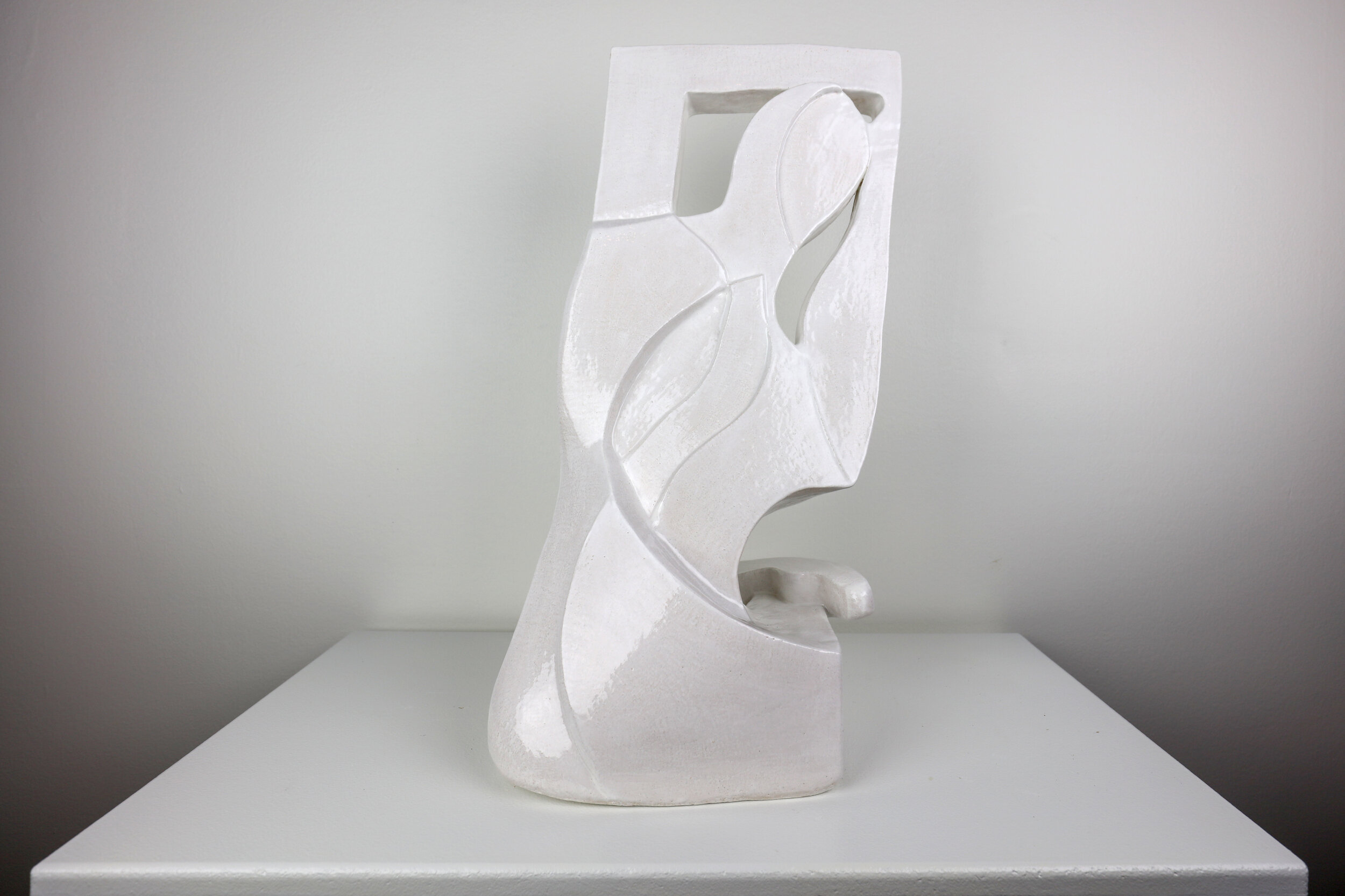
Embrace #2, 22"Hx13"Wx12"D
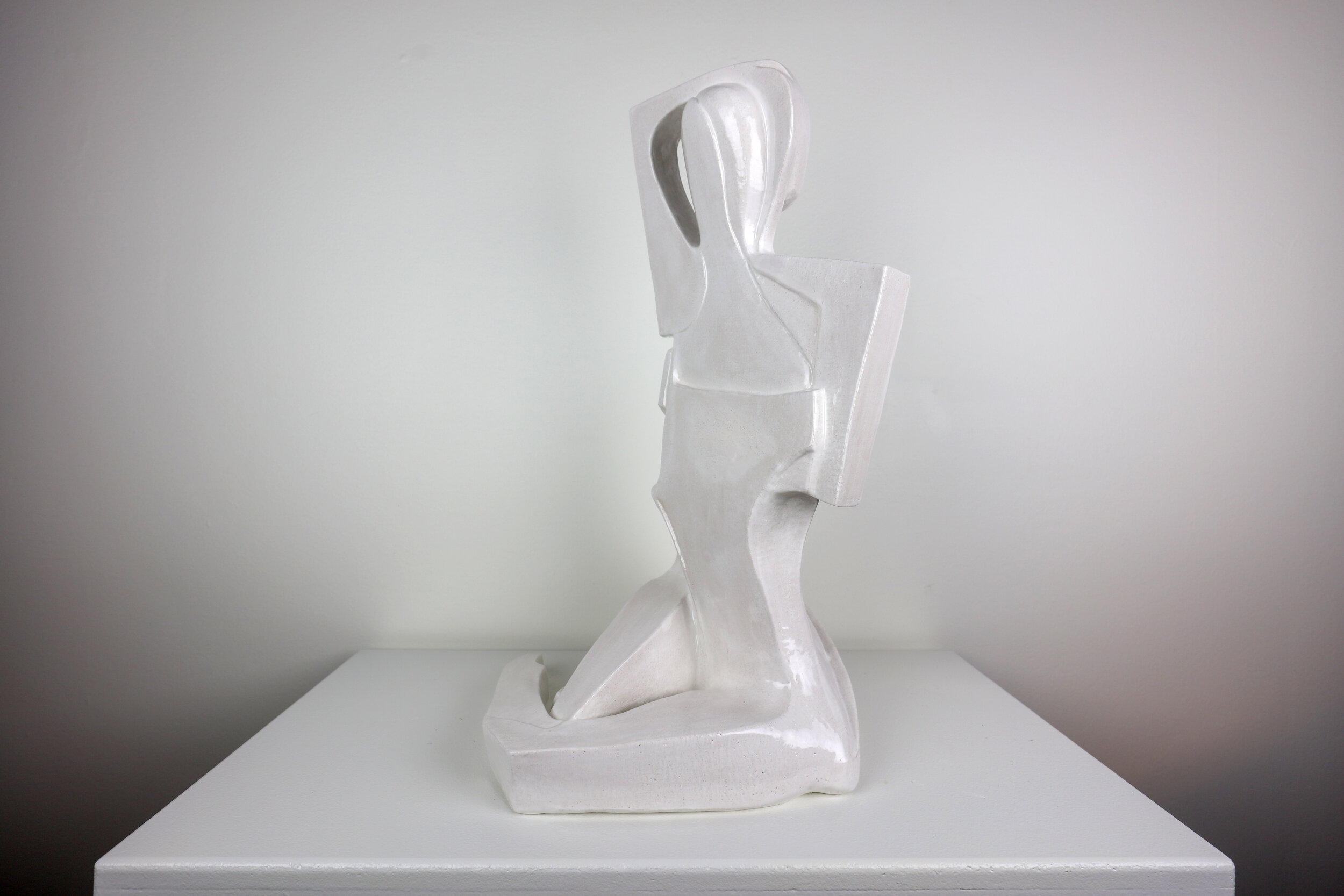
Embrace #1, 22"Hx15"Wx13"D

The Amazon 20"Hx13"Wx17"D SOLD

Sylphide 23"Hx12"Wx7"D
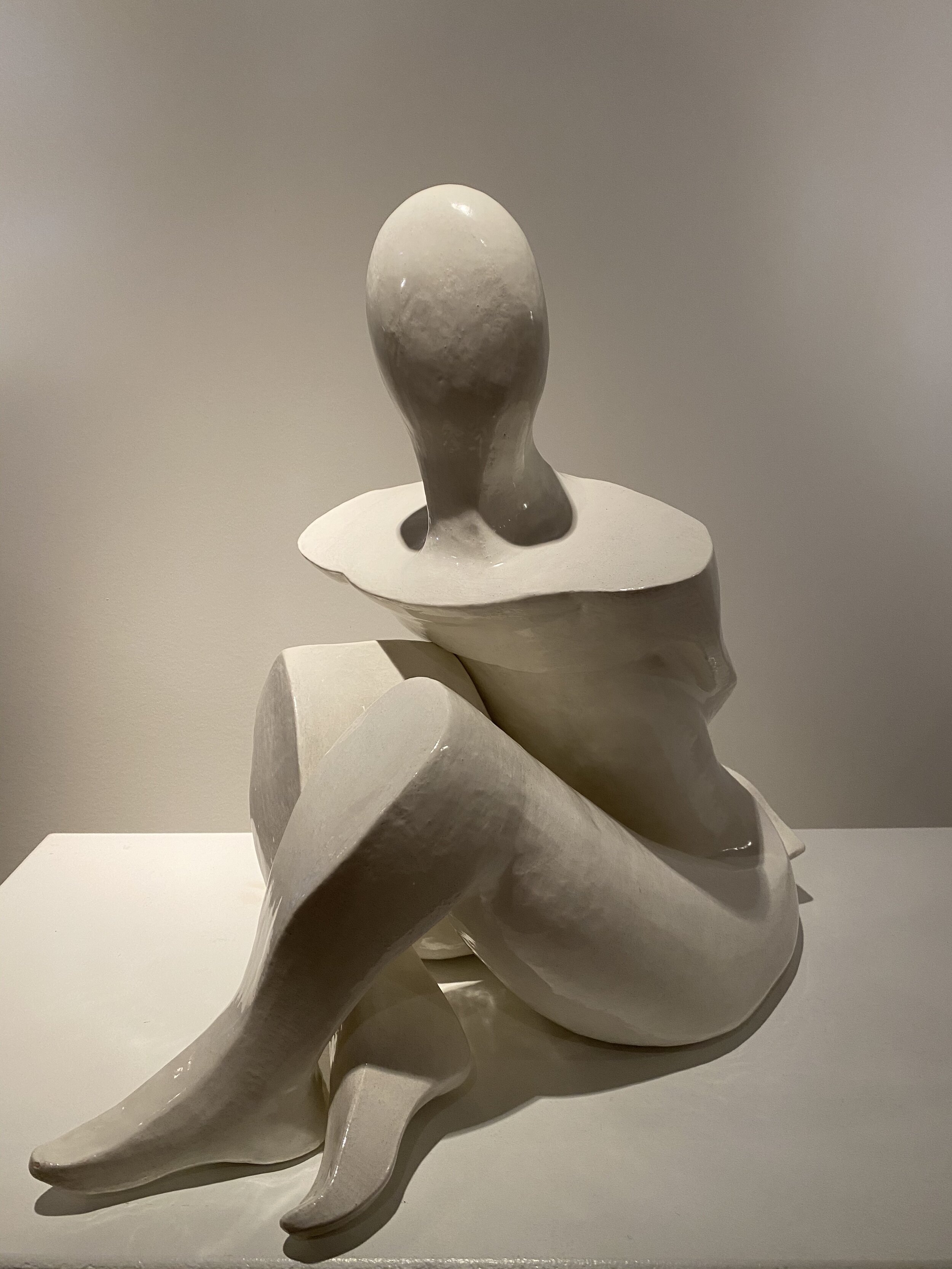
The Odalisk 17"Hx11"Wx19"D SOLD
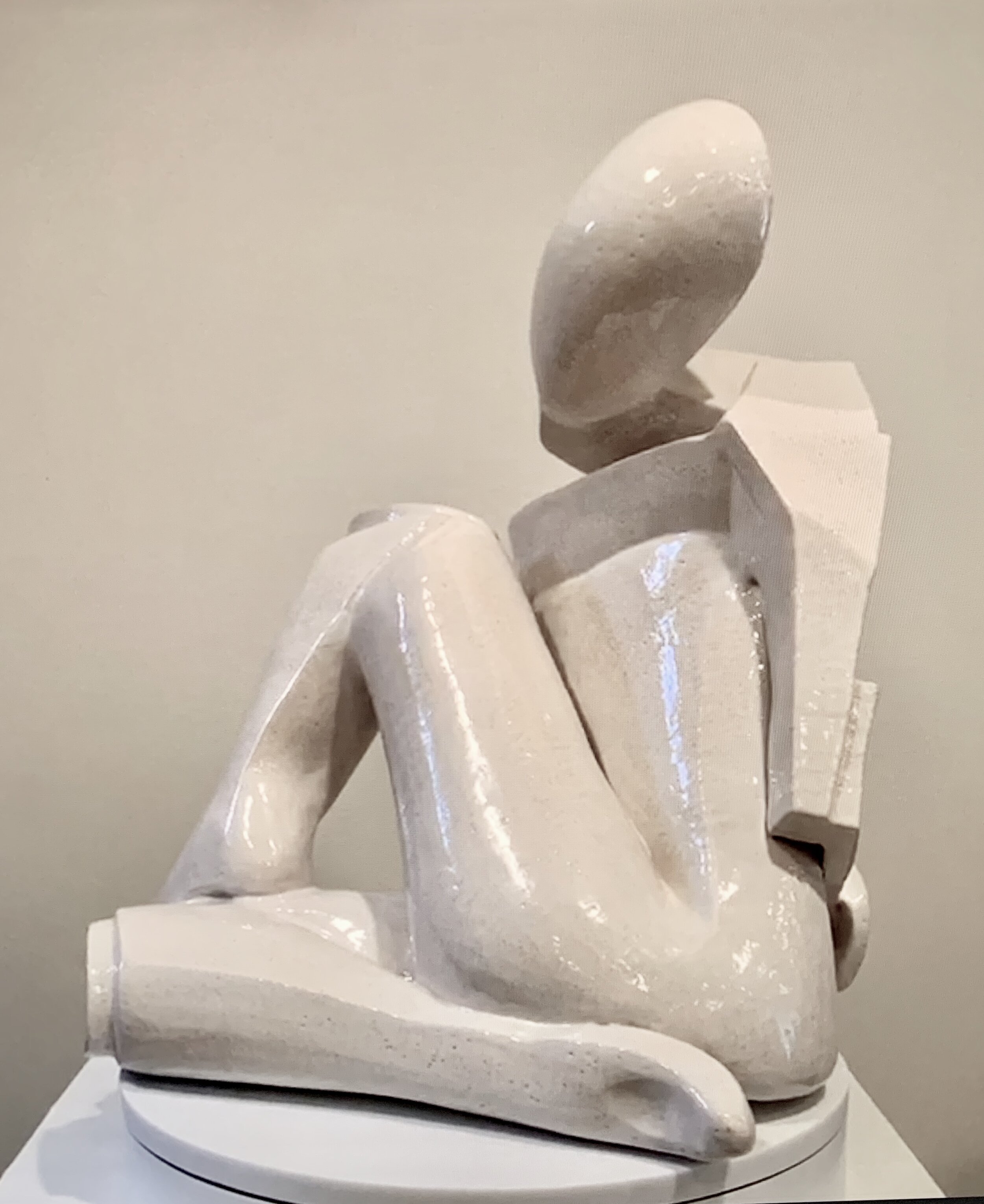
Always 16"Hx12"Wx12"D SOLD

More 16"Hx15"Wx16"D SOLD
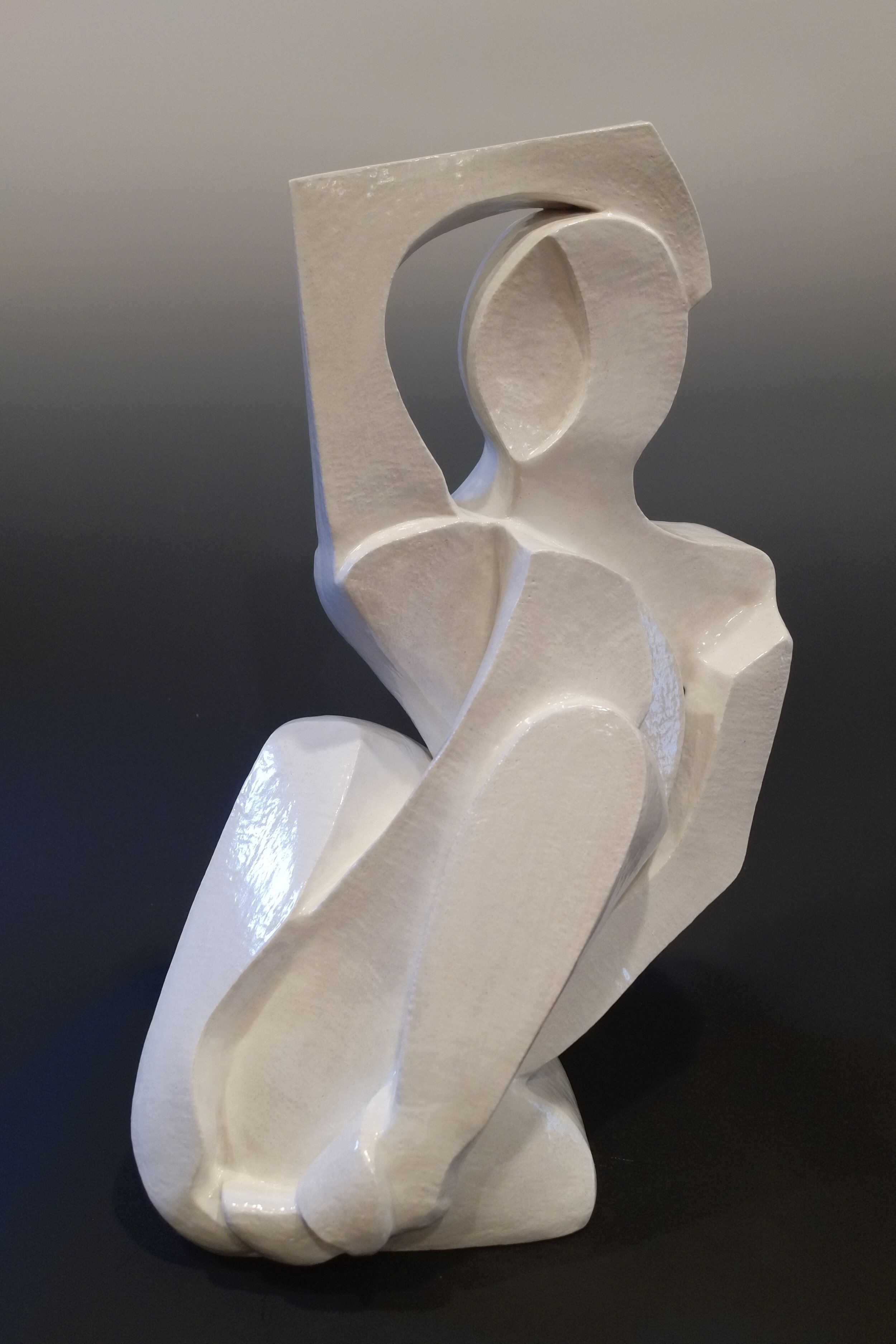
Closer 21"Hx14"Wx11"D SOLD
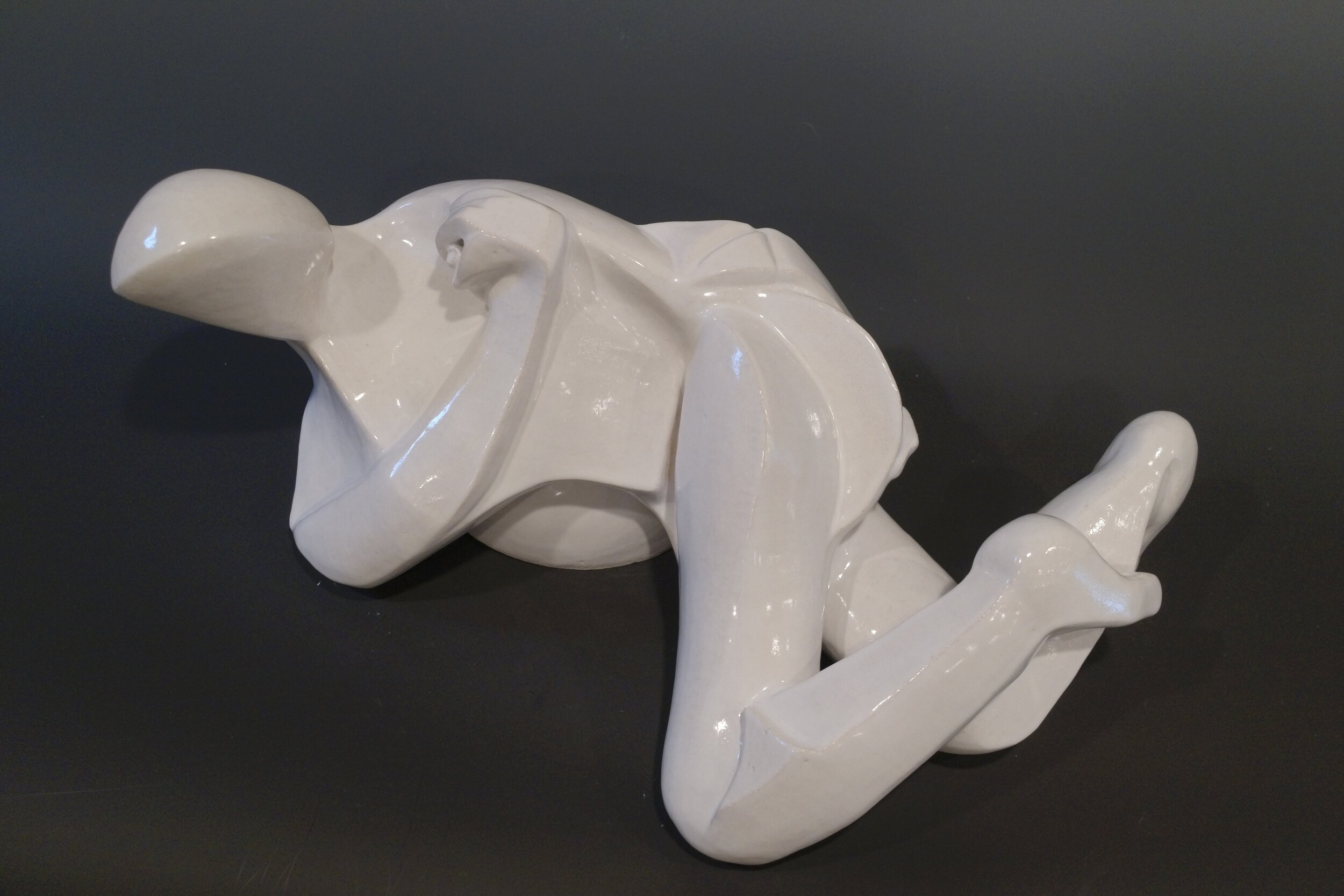
Closet Love 9"Hx23"Wx14"D
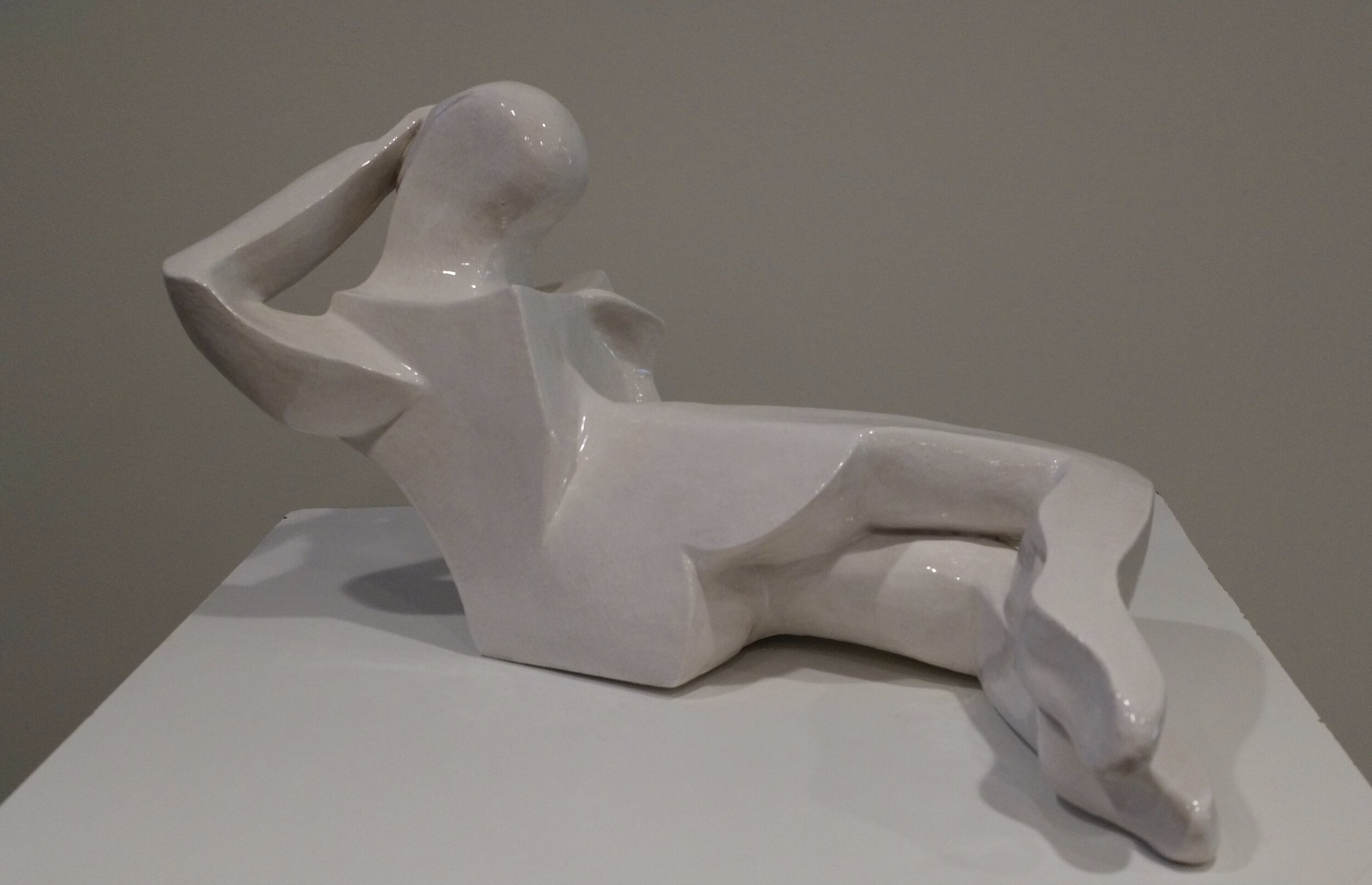
Anticipation 12"Hx21"Wx11"D SOLD
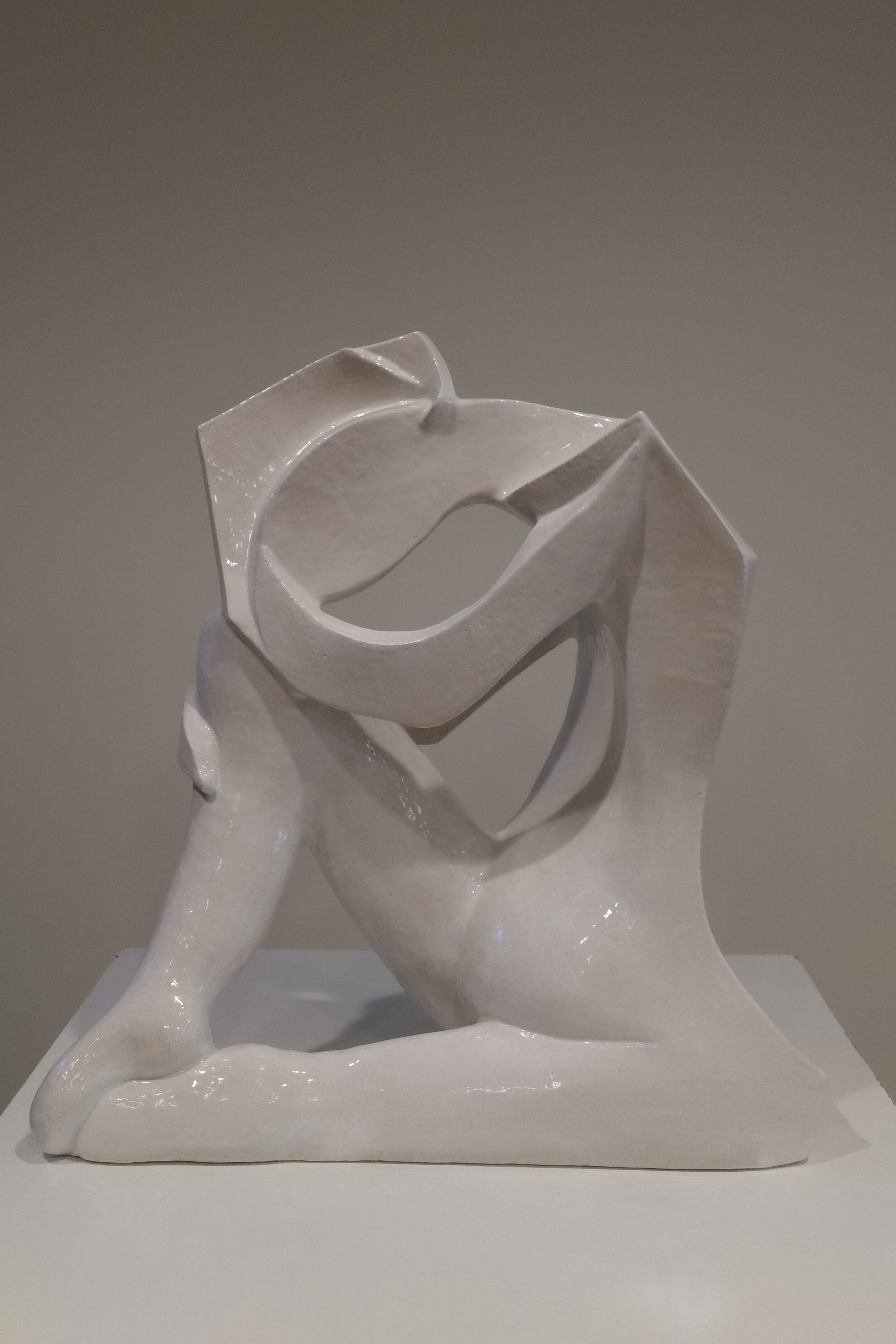
Collapse 21"Hx1'0"Wx19"D SOLD
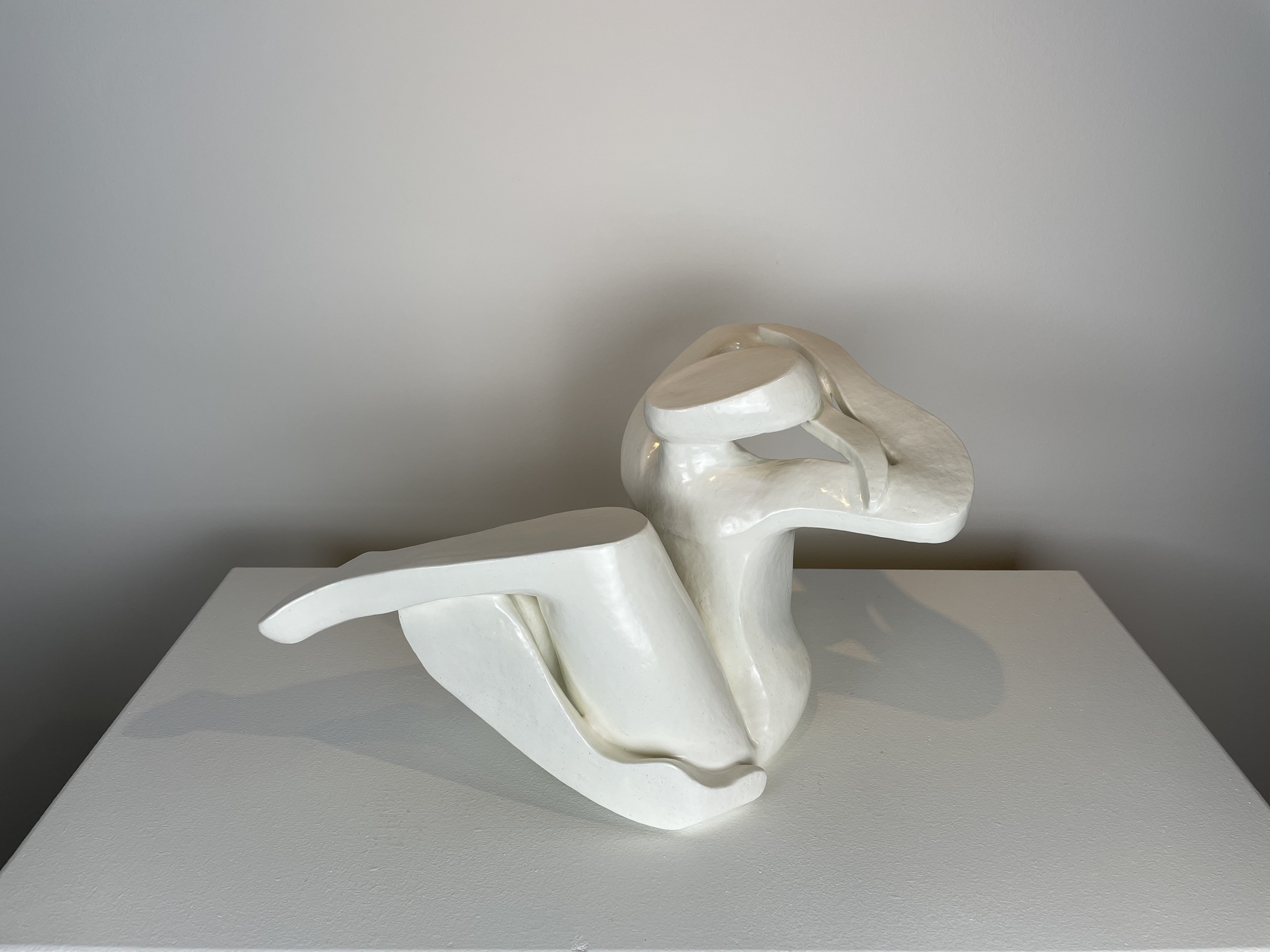
Still Waiting 10"Hx10"Wx14"D SOLD
Kandinsky Nudes: becoming the circle, square and triangle
Text by Michaela Mullin
There is nothing primary or basic, in general terms, about Ibsen’s “Three Kandinsky Nudes.” These homages to Wassily Kandinsky, however, do take up Bauhaus ideas of geometric shapes and color: Yellow triangle, Blue circle, Red square. Ibsen renders the human figure in these “inferred” forms, but with Kandinsky’s warnings in mind—that radical abstraction risks creating geometric ornament, to which Ibsen victoriously says, “I think here I proved [Kandinsky’s] point; I abstracted without negating.” This project began as an academic exercise, Ibsen notes, which she says offered an unexpected turn when she began addressing the color component to the figurative shape/sculptures. She uses acrylic and felt beneath the sitting figures to “hint” at the equivalent hue for each position.
These new works sit perfectly within Ibsen’s personal oeuvre, with its quandary or unease about the term “abstract art.” It is a dubious term that mandates a perceptual origin, which of course then throws every other term and ‘ism’ into question. She says, “I totally agree with Kandinsky’s conclusion: Realism=abstraction; Abstraction=realism.” Ibsen knows, however, that an investigation is never complete or over, so she keeps researching and exploring. The world is fortunate to view her process and culminations, from any distance.
Etchings inspired by the sculptures
Jakuchu and kintsugi inspiration

Rooster Smorgasbord 19"Hx14"Wx0.5"D

The Courtship 19"Hx12"Wx0.5"D
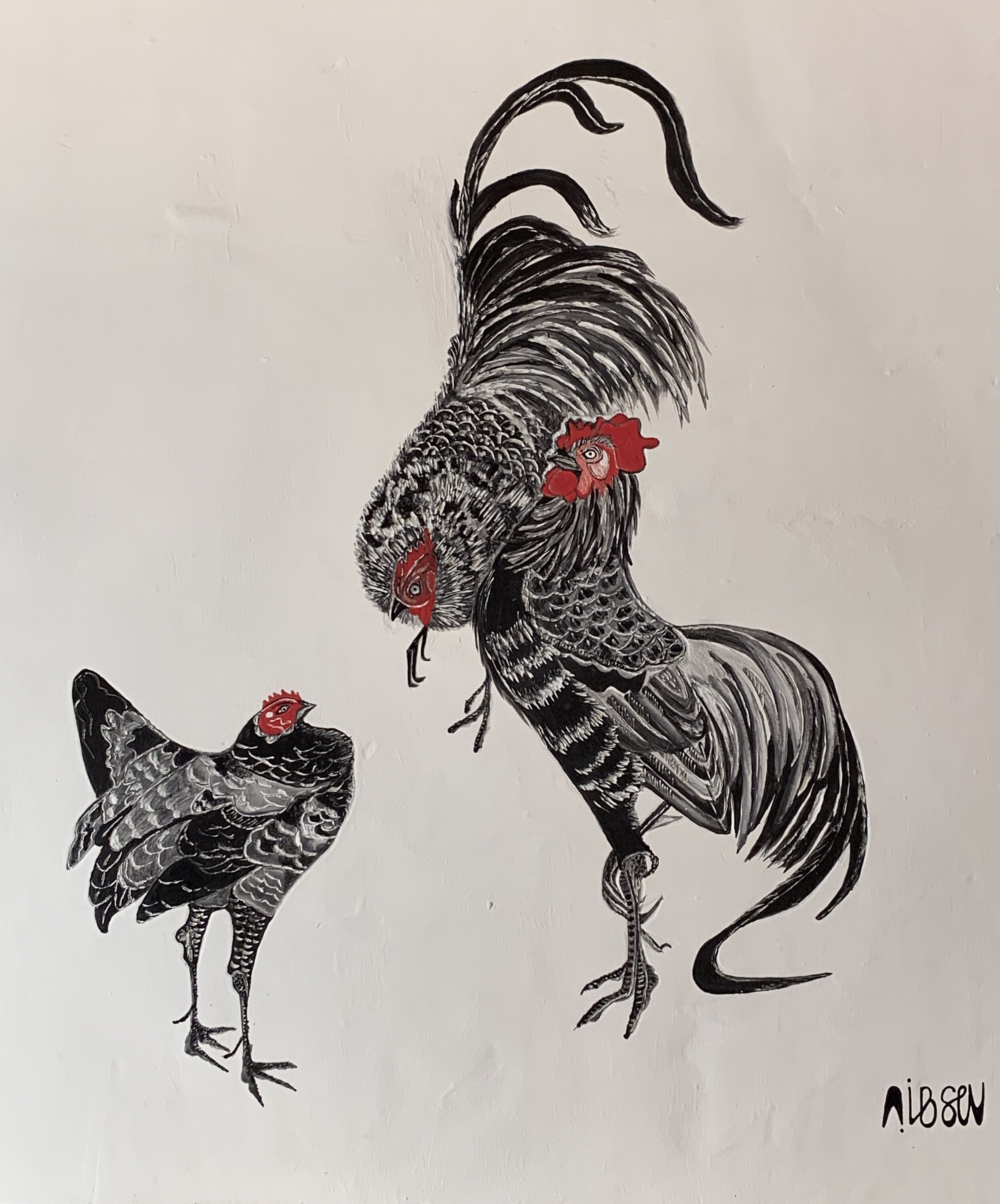
The King's Court 14"Hx14"Wx0.5"D

Preservation 12"Hx11"Wx05"D

Rooster, Slip cast bowl

Winter, Slip cast bowl
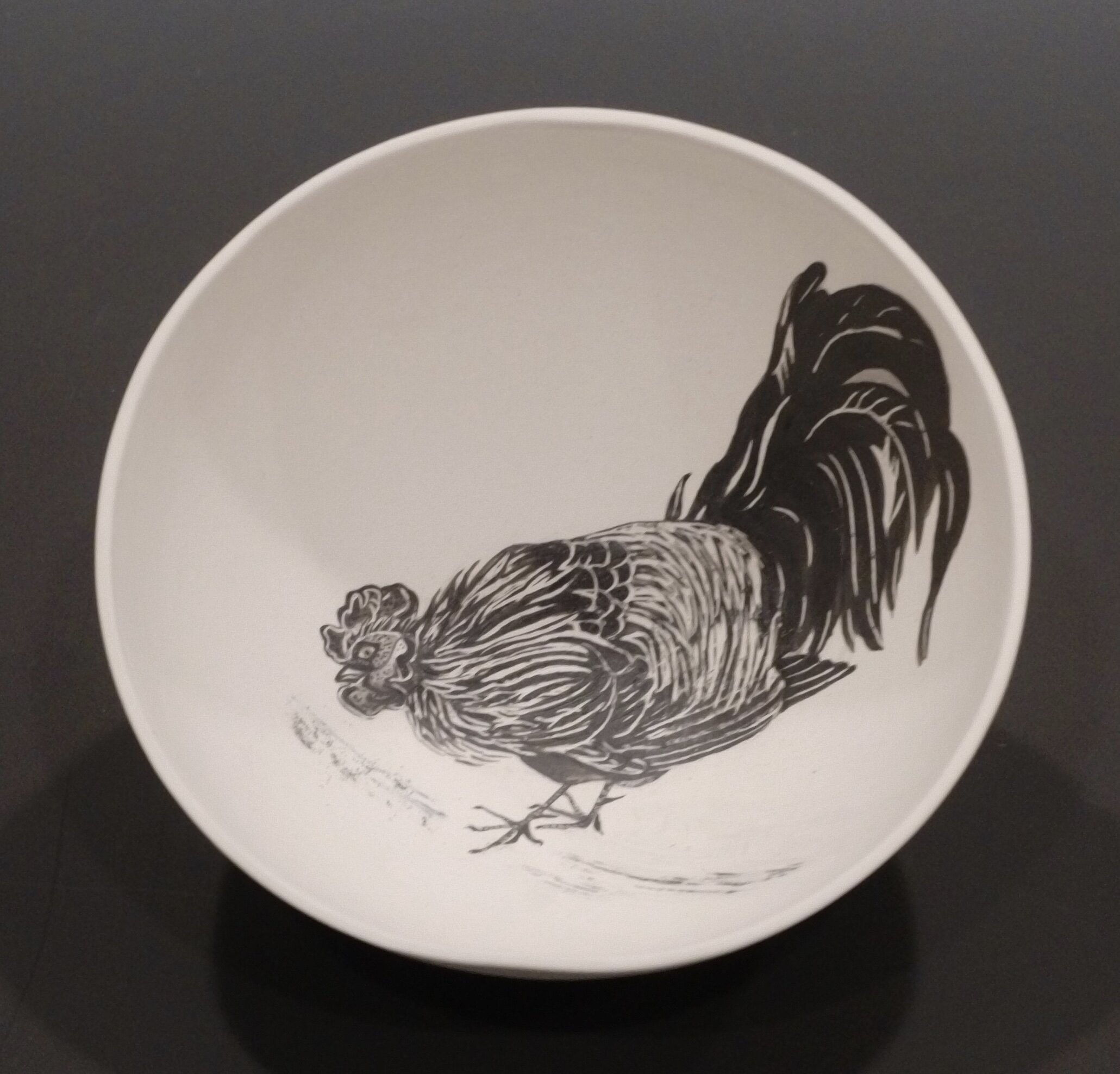
Rooster, Slip cast bowl
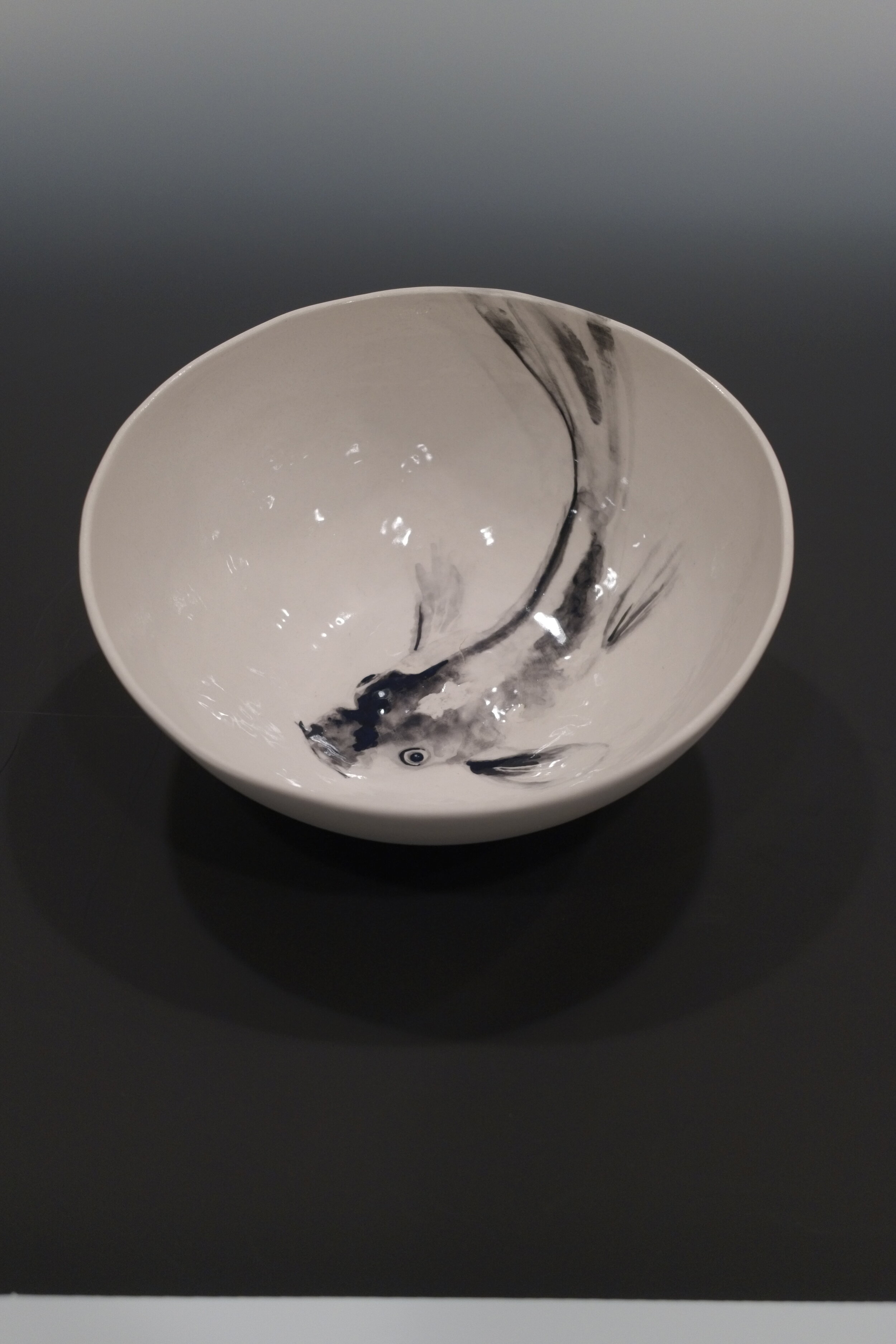
Koi fish. Slip cast bowl

Rooster, slip cast bowl SOLD
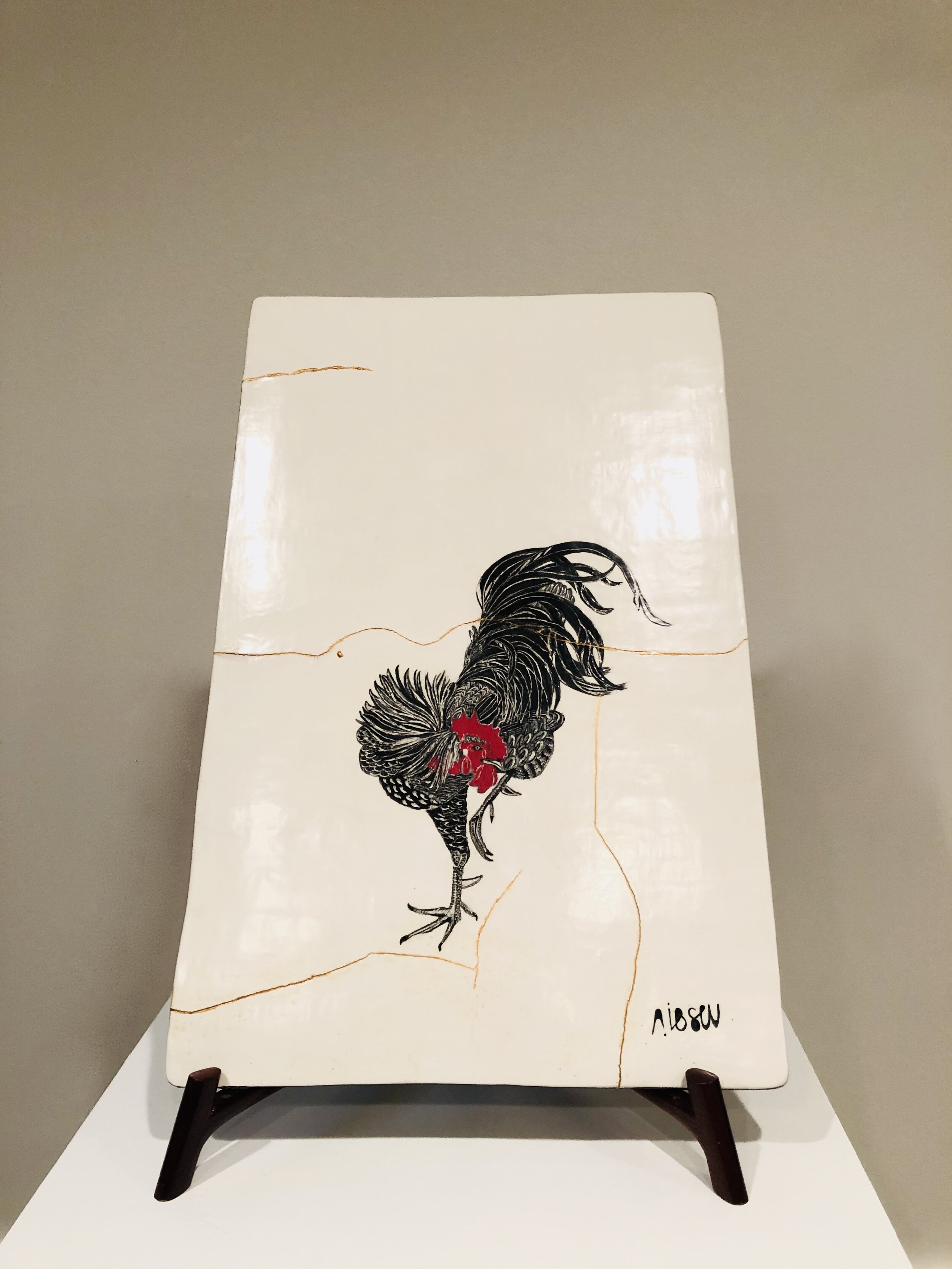
Rooster, SOLD
Still lives made sculptural
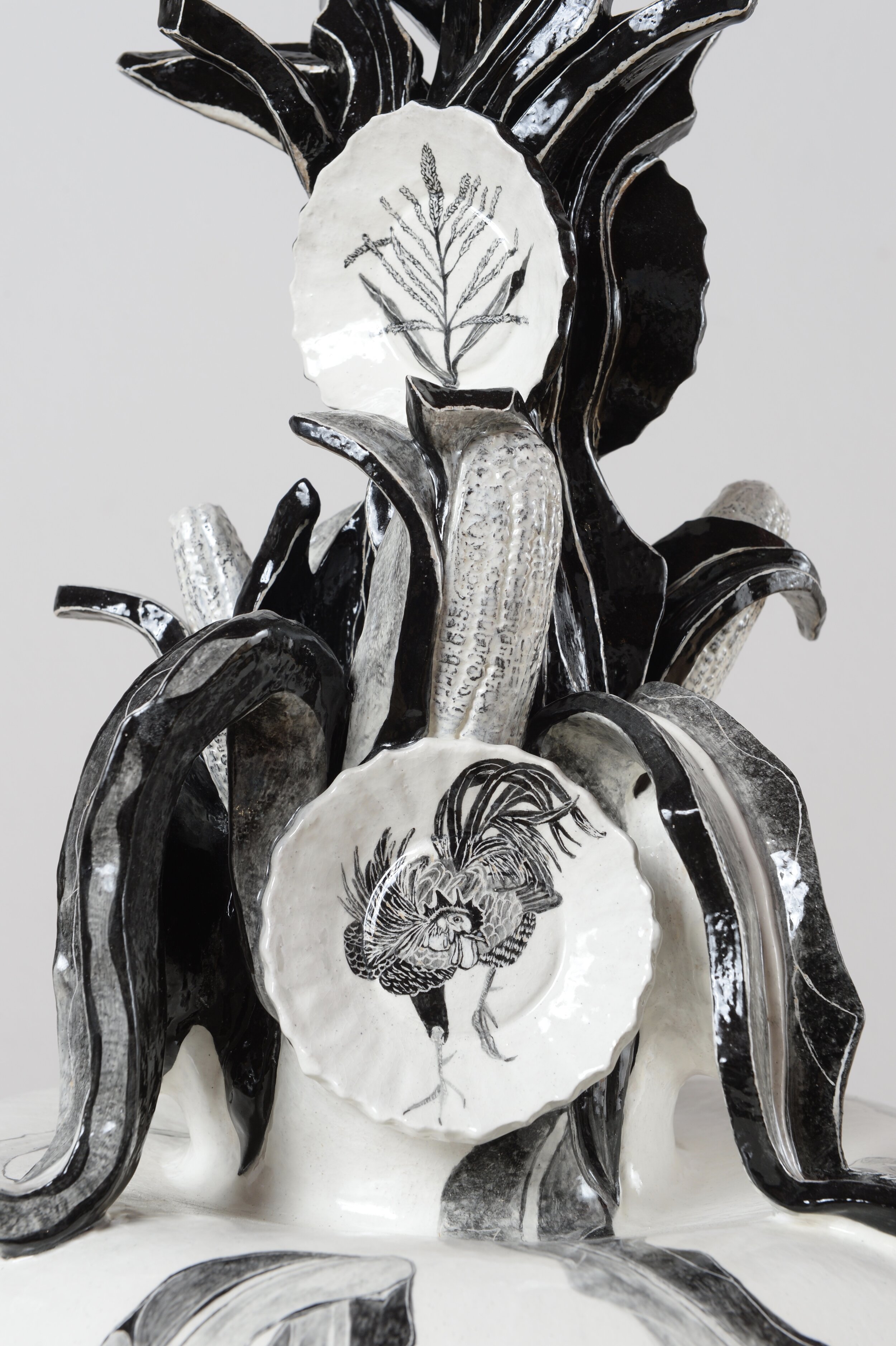
The Midwest detail 22”H x 17”W x 17”D
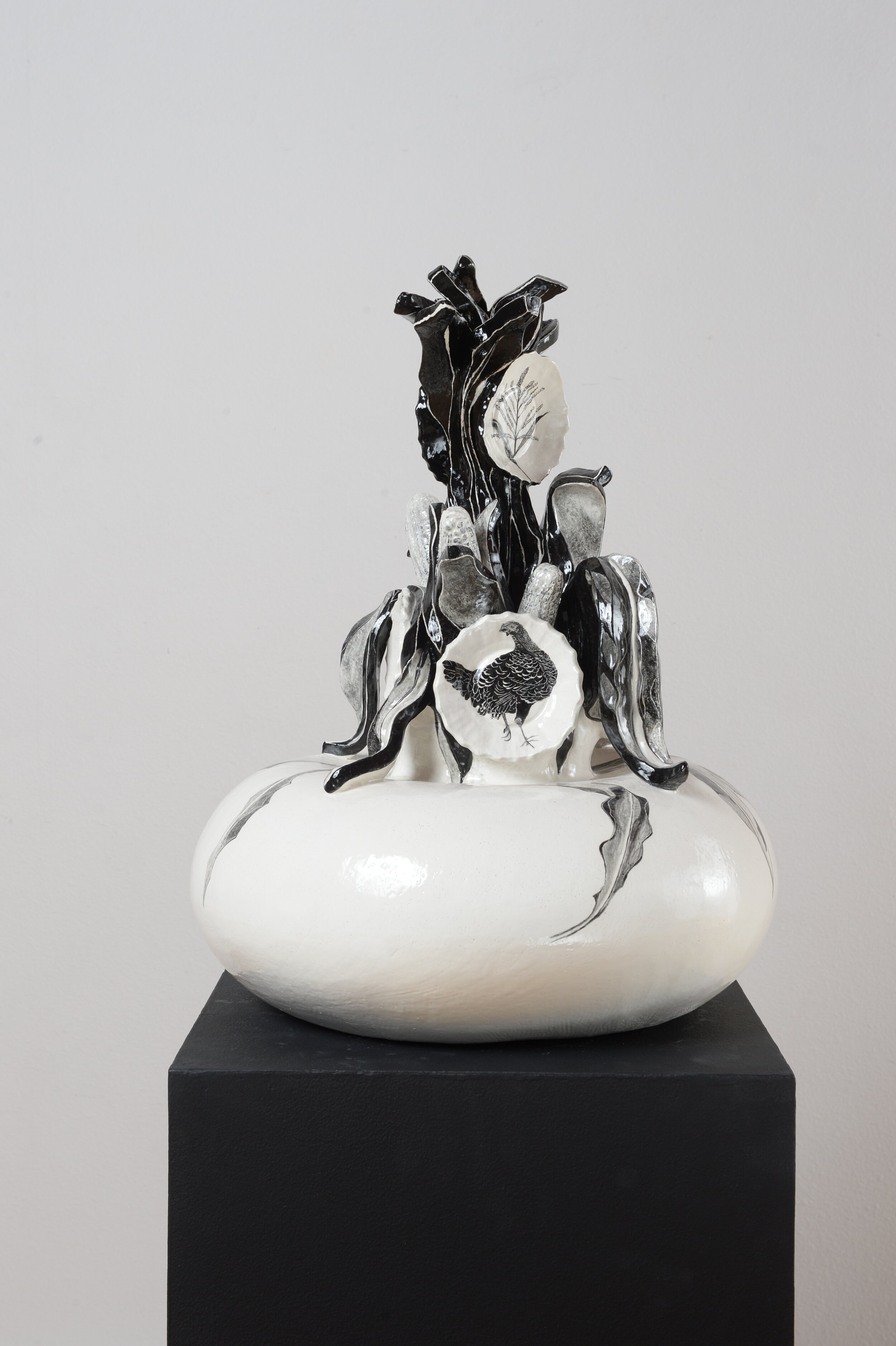
The Midwest 22”H x 17”W x 17”D
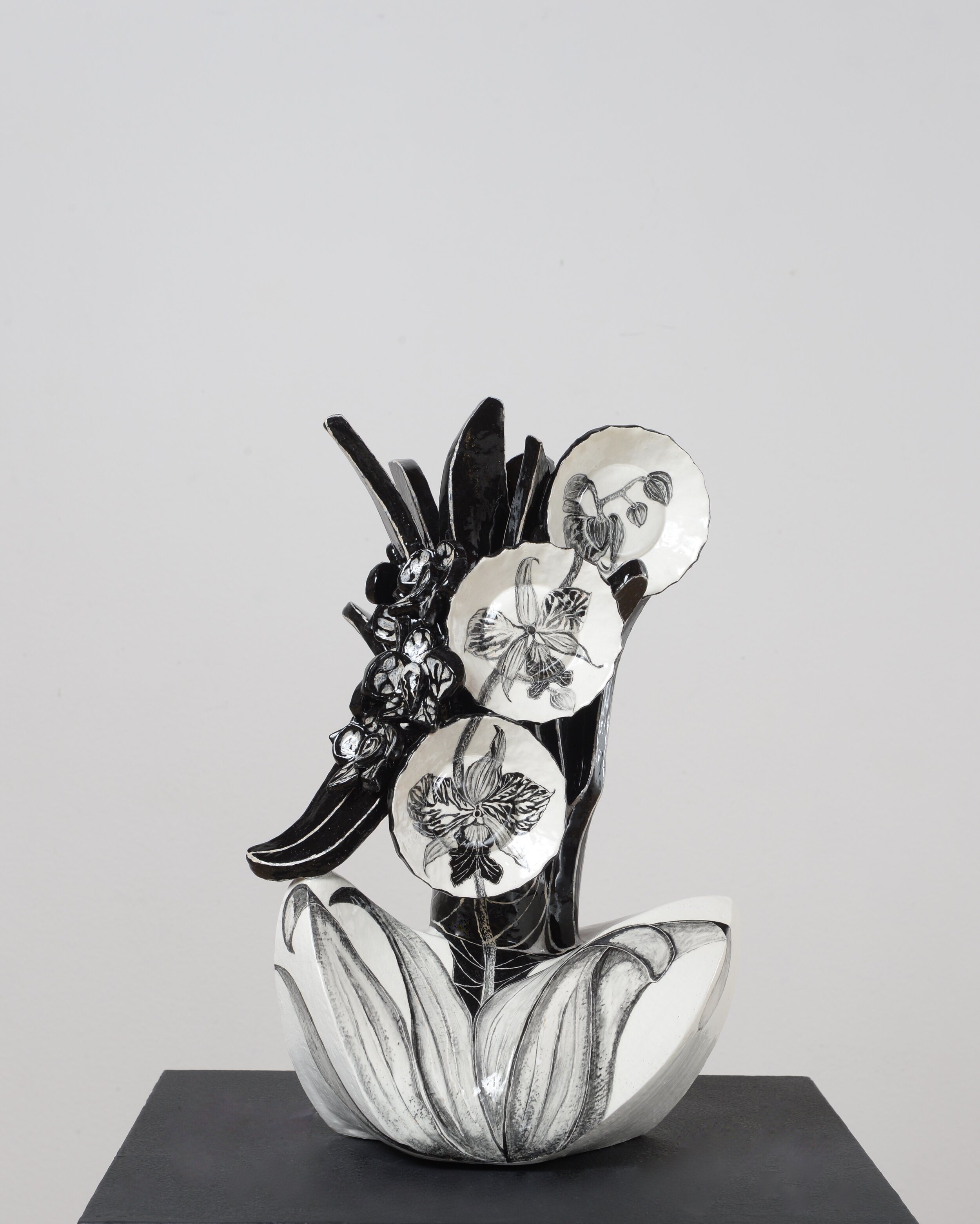
Orchids 3 cameos 17”H x 12”W x 10”D

Orchids 2 cameos 17”H x 12”W x 10”D
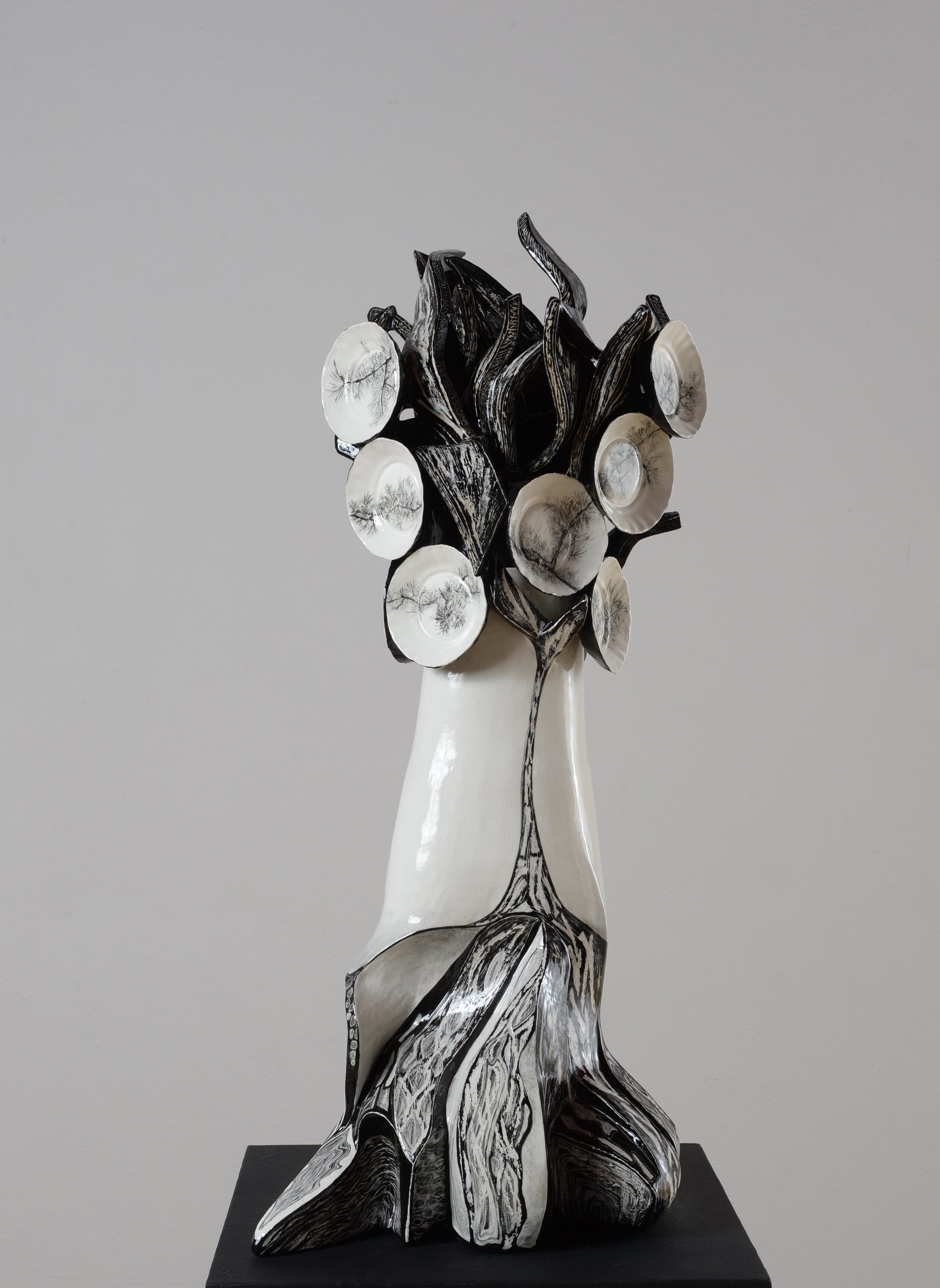
American Oxygen 24”H x 16”W x 16”D

American Oxygen detail 24”H x 16”W x 16”D
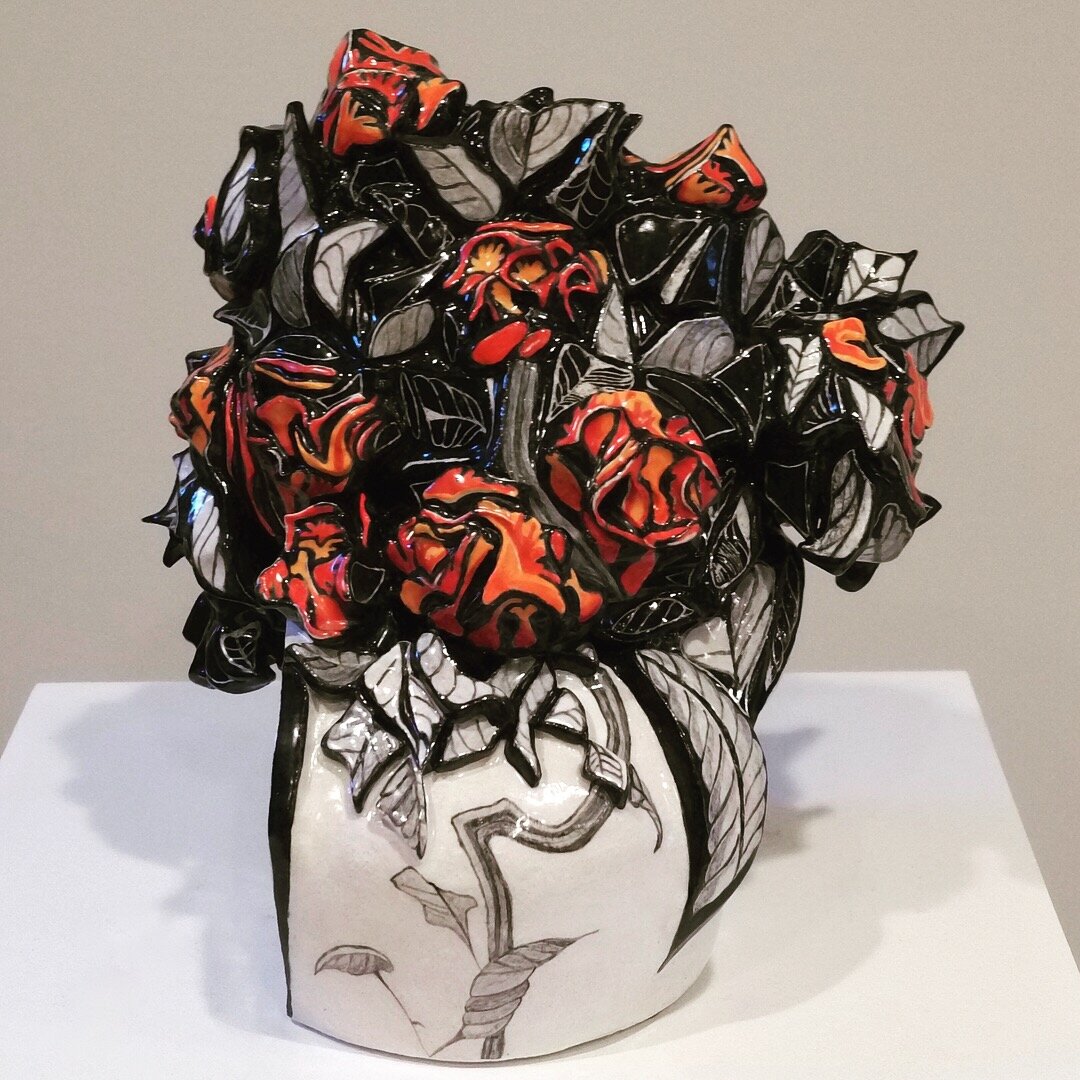
Cockscombs 13”H x 12”W x 12”D
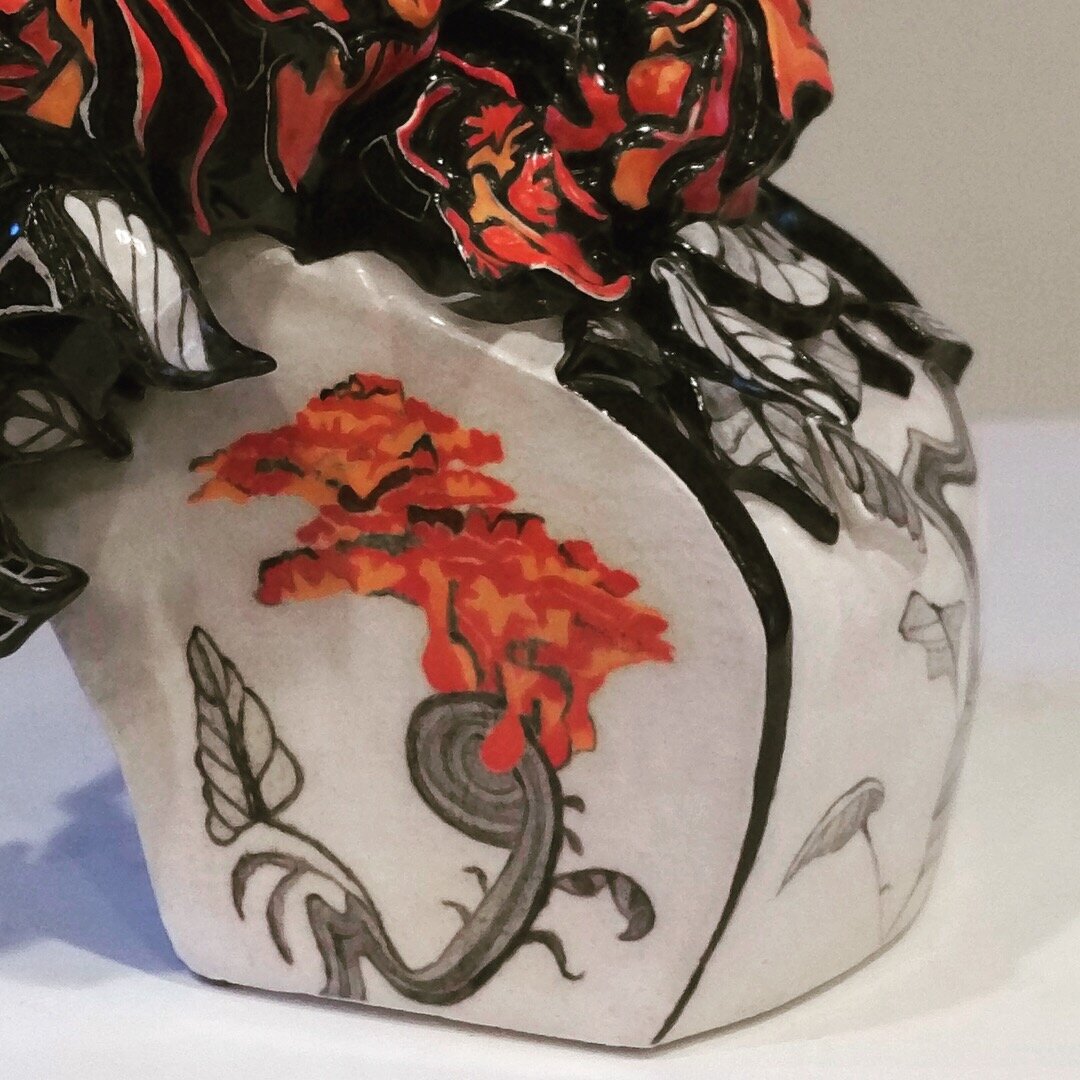
Cockscombs 13”H x 12”W x 12”D

Citrus Fruit Bowl 10”H x 11”W x 10”D SOLD
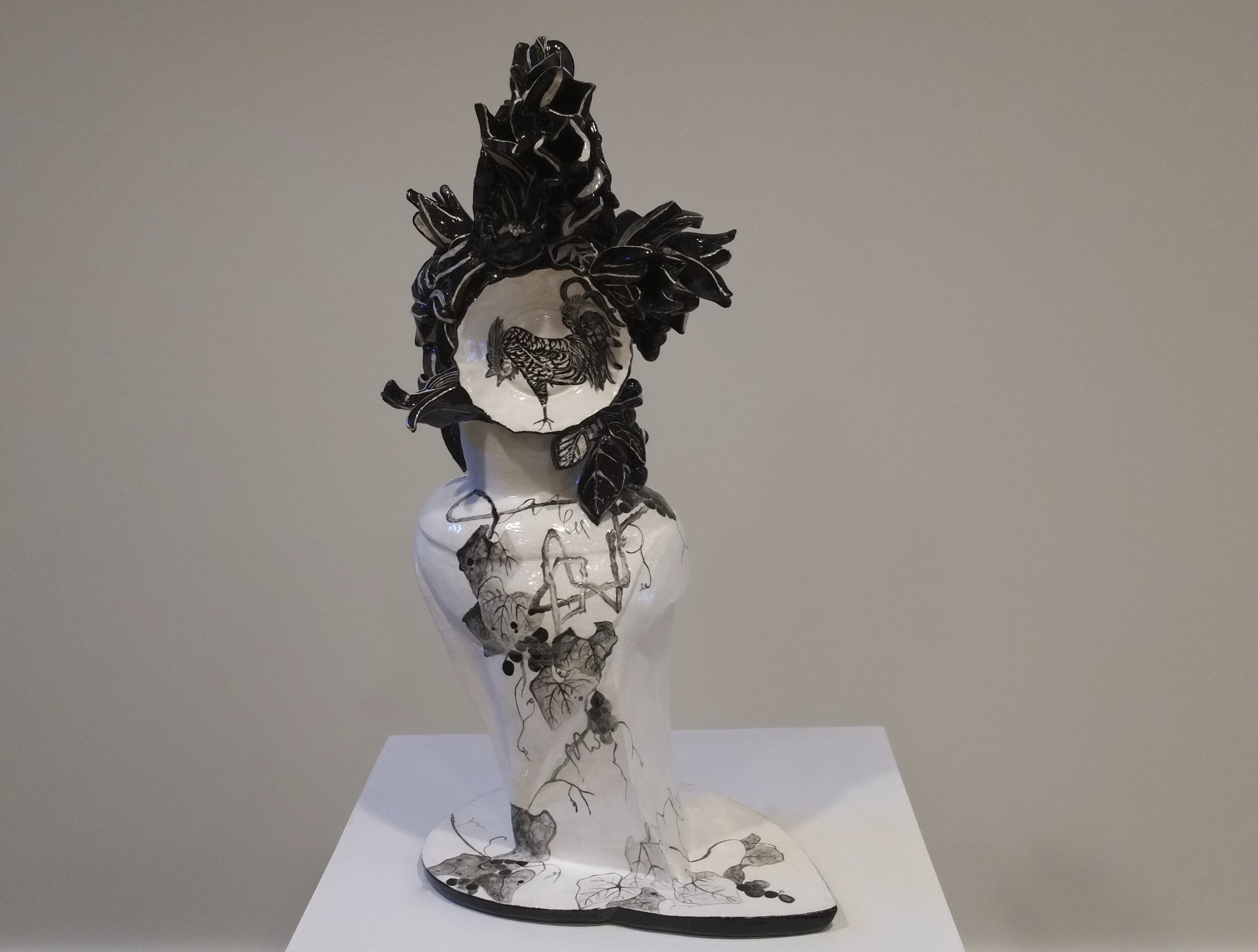
Black Tulip 21”H x 11”W x 9”D SOLD
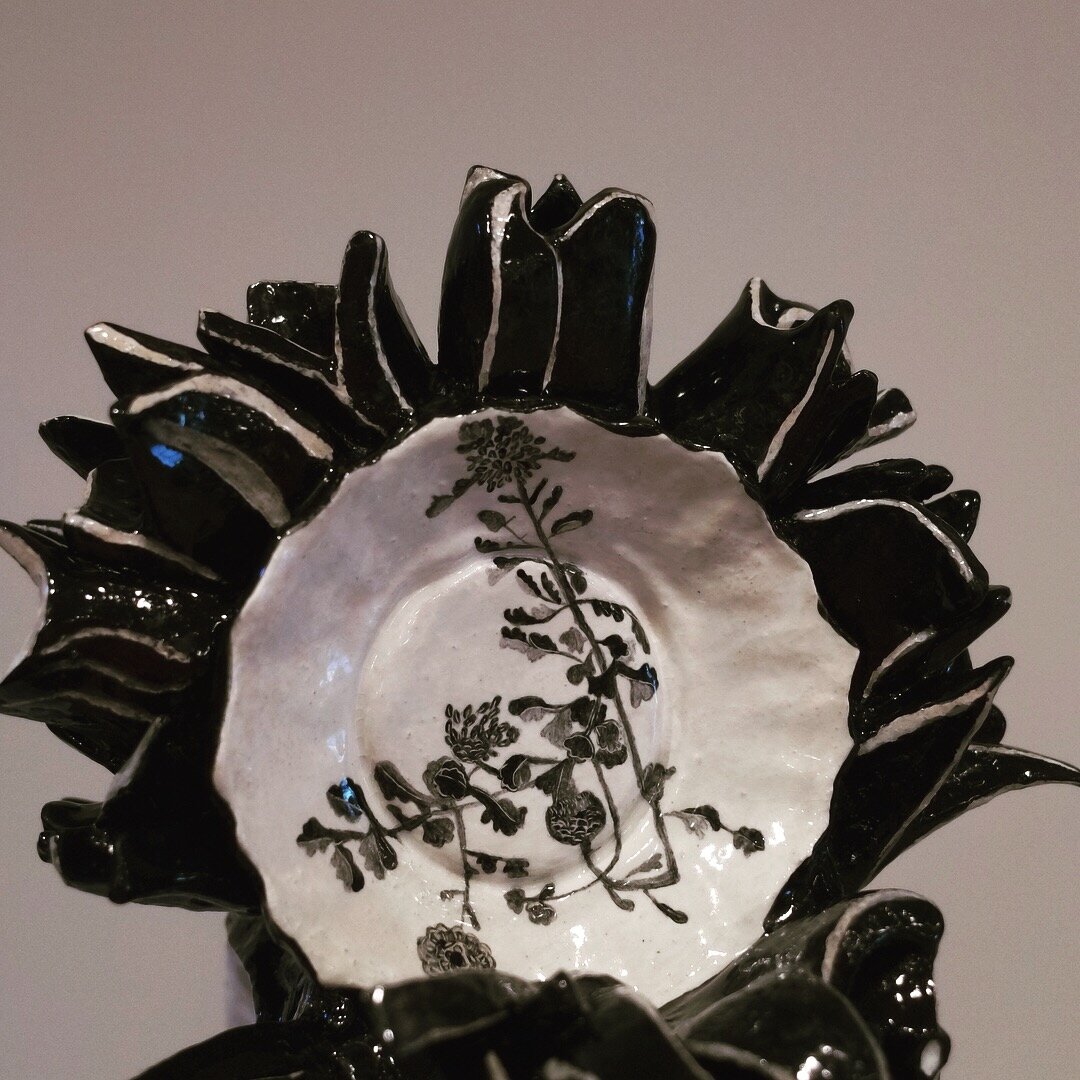
Black Tulip detail 21”H x 11”W x 9”D SOLD
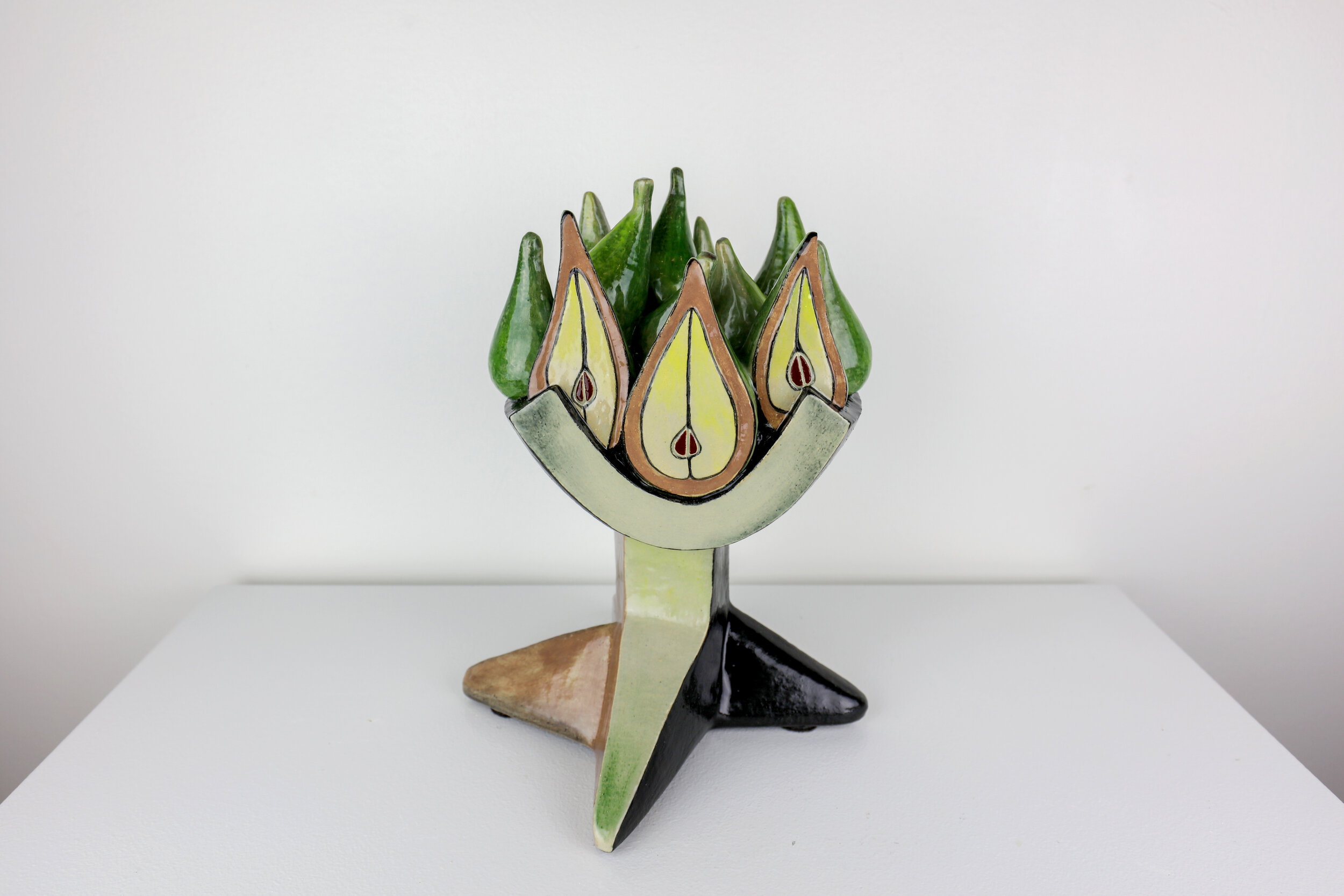
Pears 12"H x 10W x10"D SOLD

Fruit Bowl #2 14”H x 10”W x 10”D SOLD

Fruit Bowl #2 14”H x 10”W x 10”D SOLD
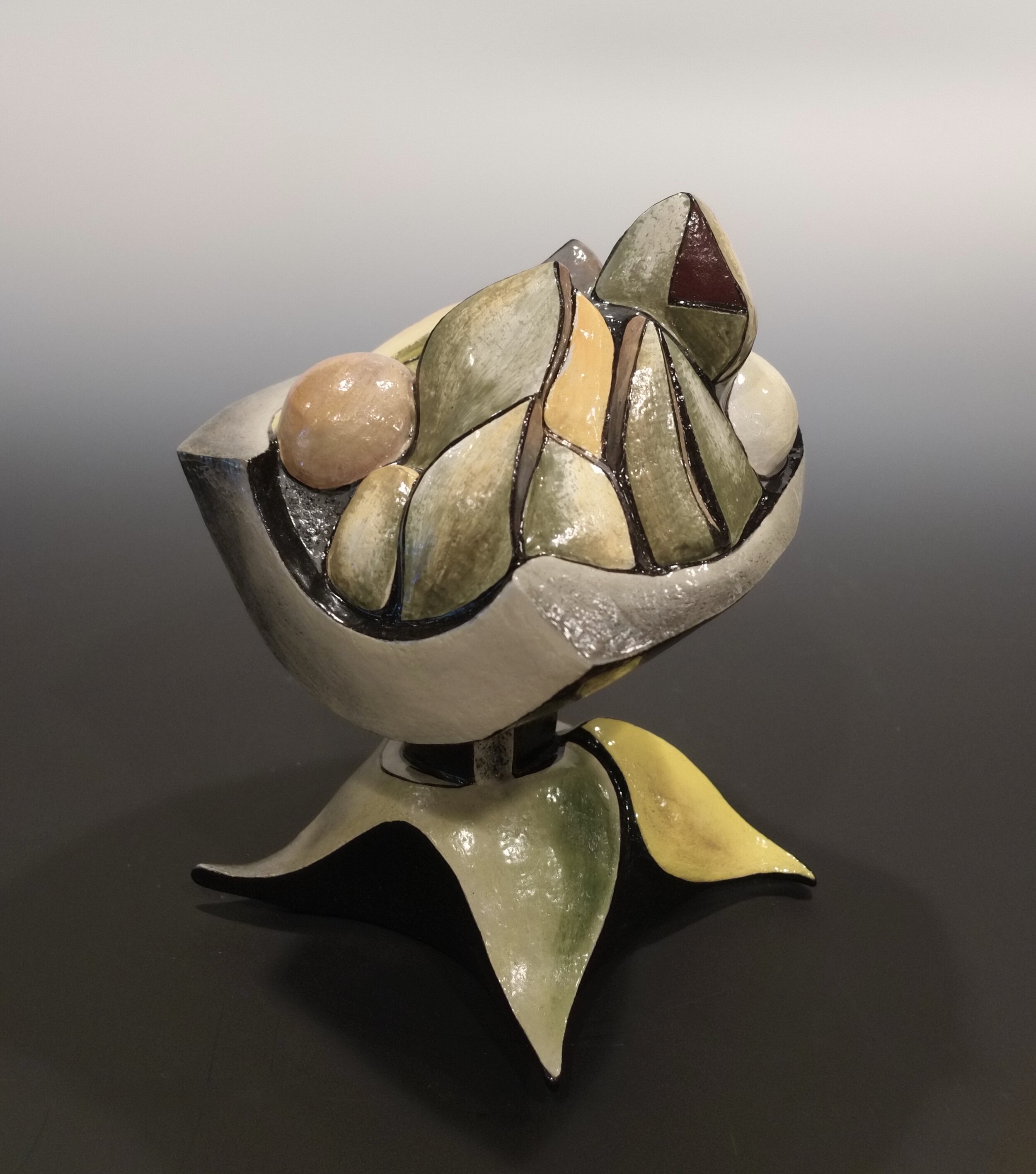
Fruit Bowl 12”H x 9”W x 8”D SOLD
Personalities based on the Enneagram
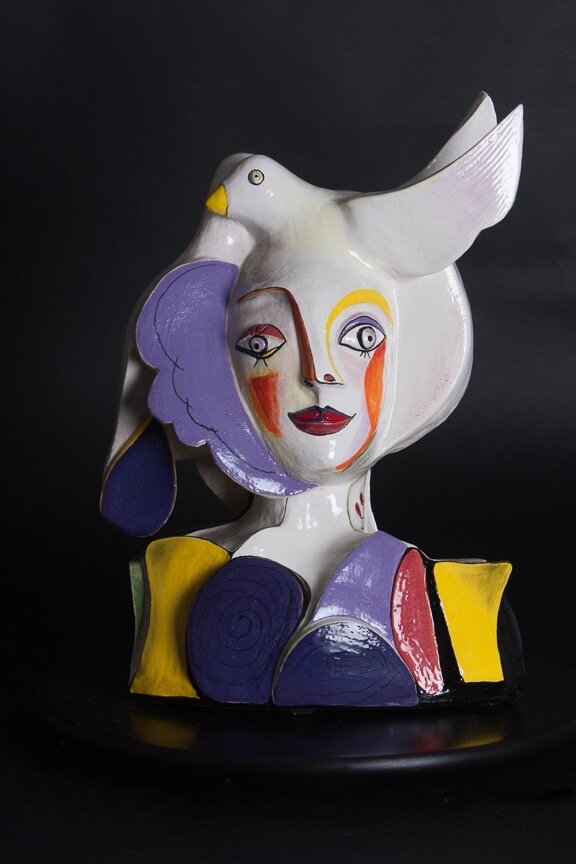
#2 The Caretaker 16"H x 11"W x 8"D SOLD
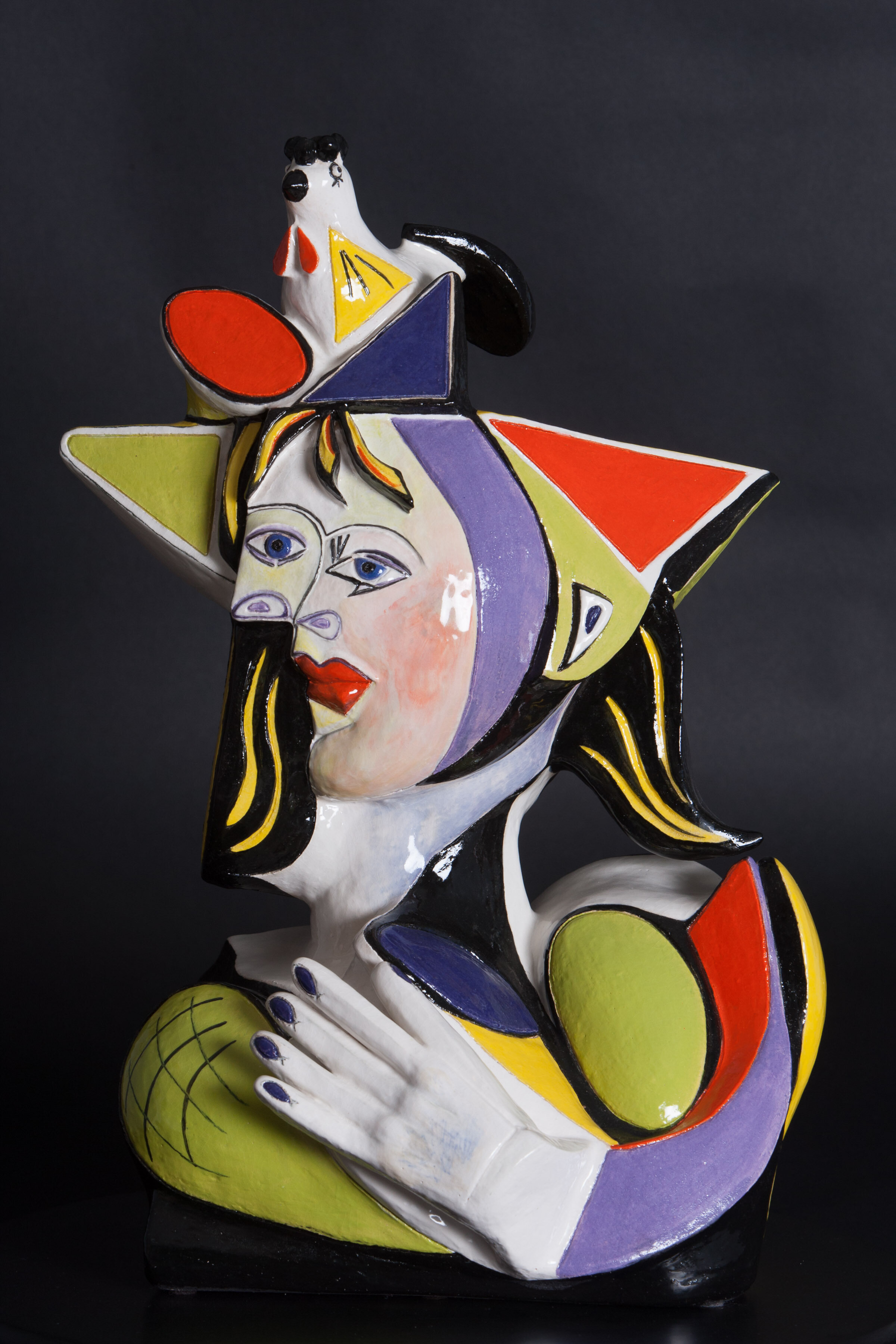
#3 The Achiever 18"H x 12"W x 8"D SOLD
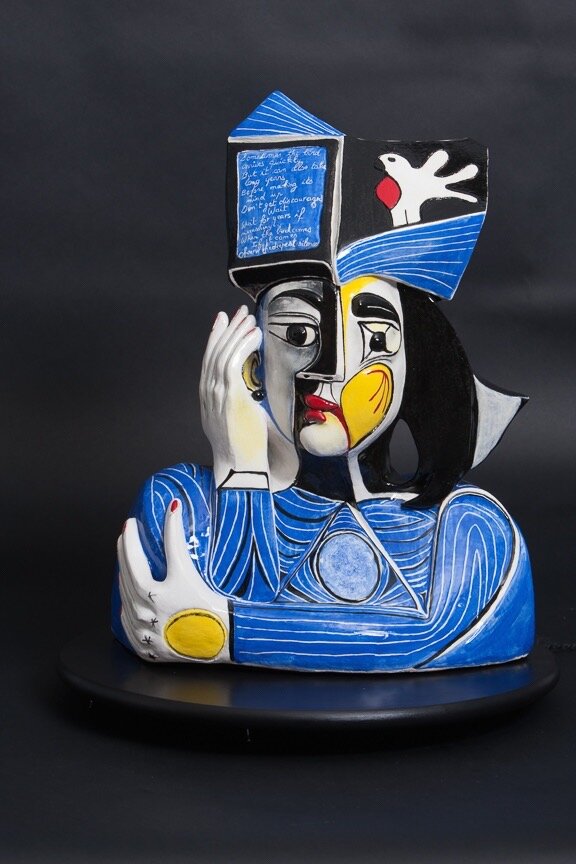
#5 The Observer 17"H x 13"W x 10"D SOLD

#6 The Questioner 16"H x 15"W x 9"D
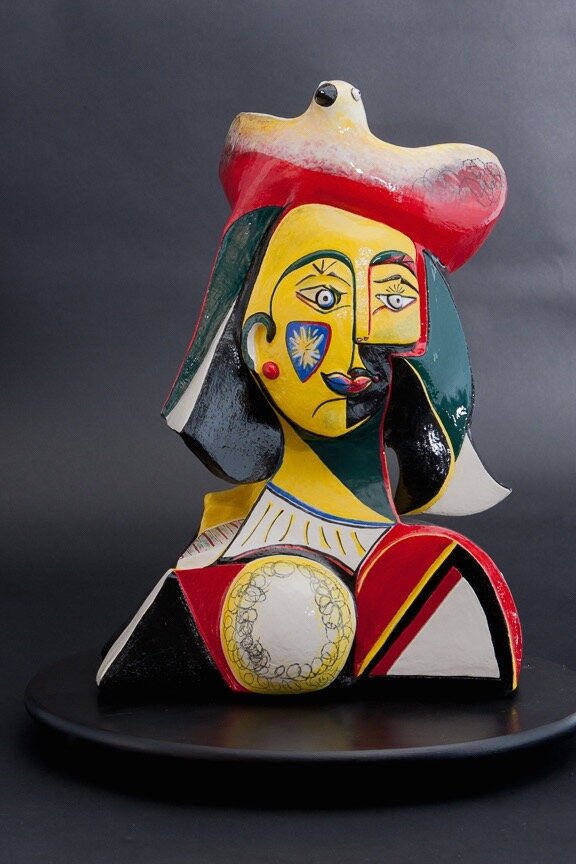
#4 The Independent 16"H x 12"W x 7"D
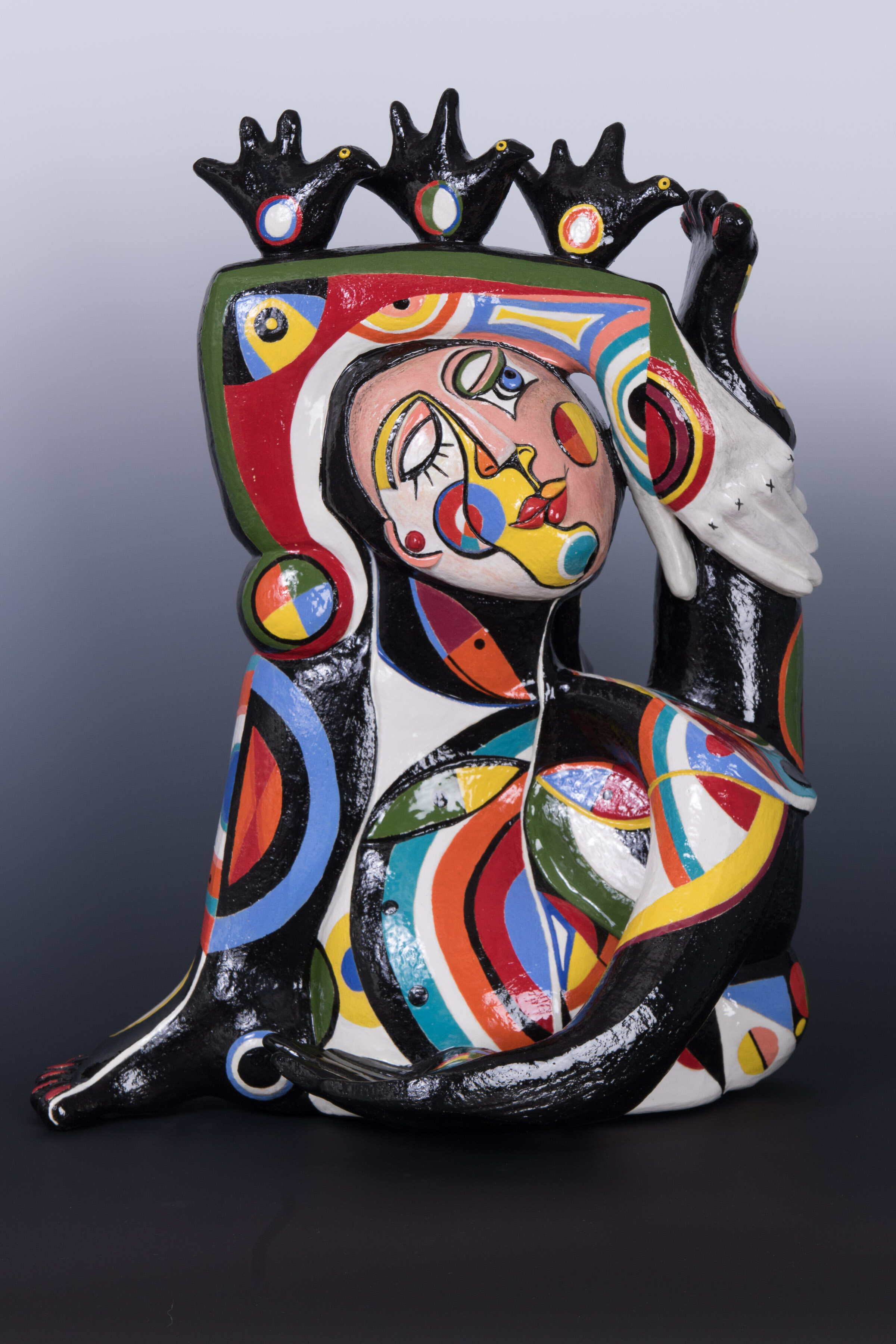
#8 The Leader 18"H x 15"W x 10"D SOLD
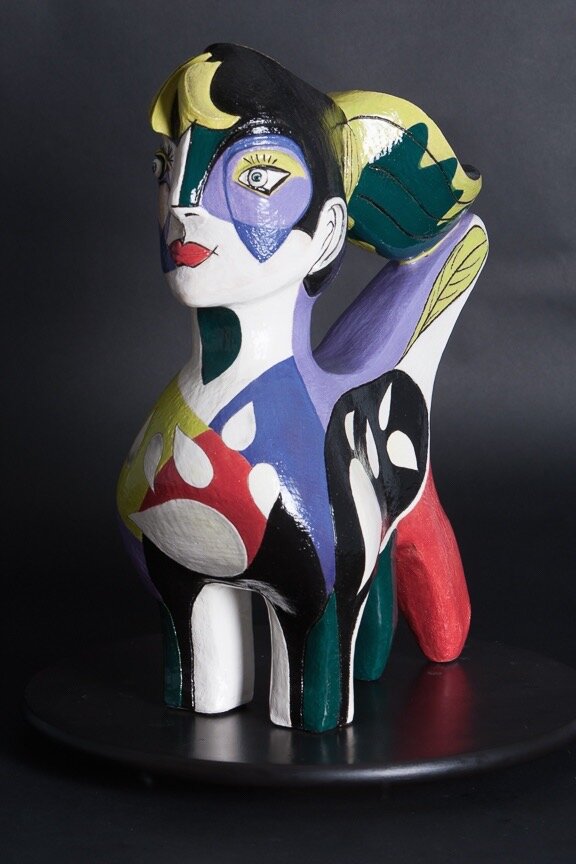
#7 The Experimenter 18"H x 8"W x 14"D
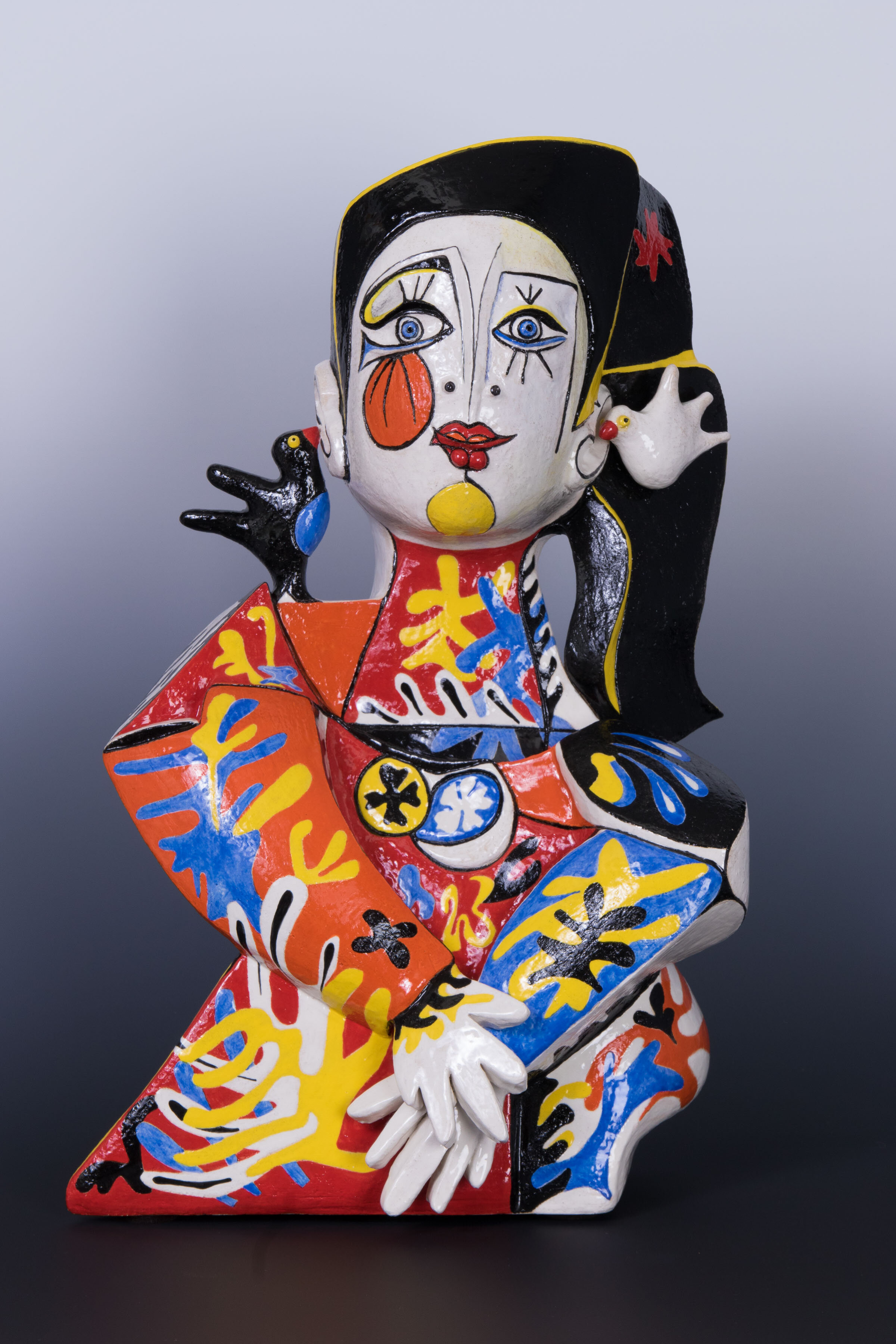
#9 The Moderator 20"H x 13"W x 9"D SOLD

#1 The Perfectionist 15"H x 15"W x 9"D
